History
Tribute to ‘give ‘em hell’ lesbian feminist pioneer Ivy Bottini
If Ivy Bottini was pissed off at an injustice, you heard about it.
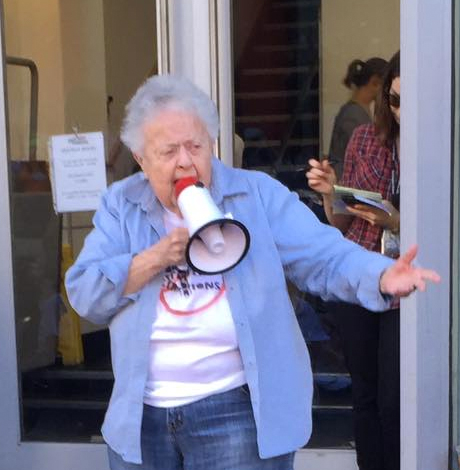
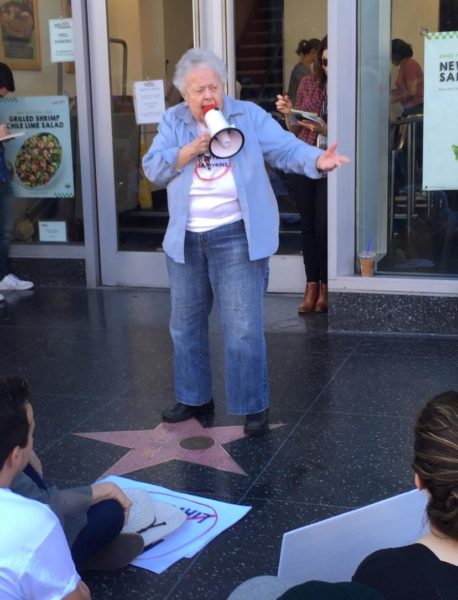
WEST HOLLYWOOD – Kick ass. If Ivy Bottini was pissed off at an injustice, you heard about it. The whole room heard about it. And by the end of her righteous rant, whether at a Stonewall Democratic Club meeting or before the West Hollywood City Council, even nonchalant shruggers applauded her passion. Time finally did what Bottini’s critics could not: her voice was silenced on Thursday, Feb. 25 at her daughter Lisa’s home in Florida. Ivy Bottini was 94.
Unlike other lesbian feminists of her generation, Bottini did not strike withering fear in the pants of men in power. Perhaps it was because she exuded a subliminal sense of caring and flashes of humor during even the fiercest of diatribes. She hated the old tropes that lesbians hated men and had no sense of humor — traits that made her accessible to those in need from 1950s and 1960s housewives newly aware of the traditional shackles of sexism to the desperate dying gay men deemed untouchable by government, society and often even family in the early days of AIDS.
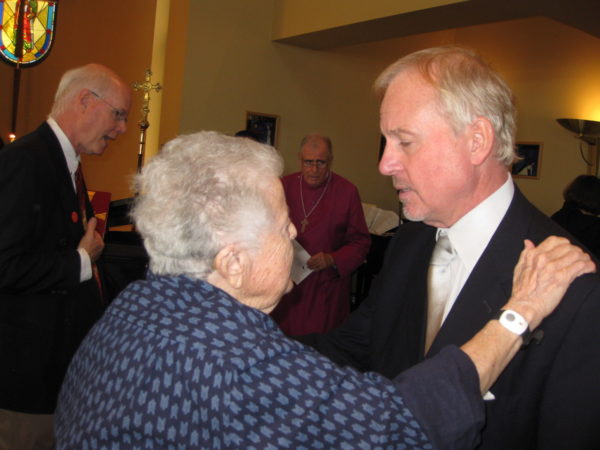
Bottini’s power emanated from her authenticity. Discrimination burned Bottini to the core. She felt the pain. But she didn’t just jawbone about it; she translated the searing anger and pain from her own awakening into activism to alleviate the pain of others, becoming a freedom crusader for women, for LGBTQ people — for anyone suffering from oppression and internalized oppression sickness.
“Thousands of deaths and no one cares! No one cares – except us,” an emotional Bottini told Andy Sacher of the Lavender Effect about the early days of AIDS. “That was inhuman what was really happening to gay men. It was inhuman how they were demonized.”
Throughout her life, each heightened moment fraught with systemic classism, sexism, racism, homophobia and transphobia exploded into a personal epiphany, emerging in her artist’s conscious as empathy for others, especially in recent years, over the profound and ubiquitous discrimination experienced by transgender youth.
In a 2017 interview, Los Angles Blade publisher Troy Masters asked Bottini: “If your life were a book, what would the title be?”
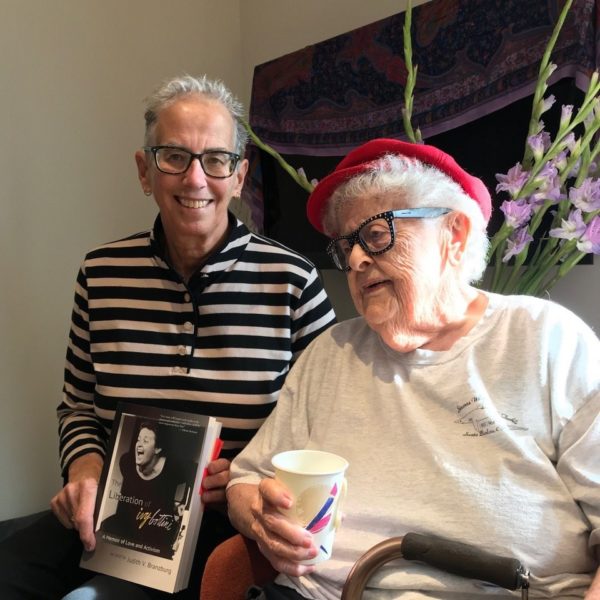
“Give ‘em Hell,” Bottini replied. In fact, the book about her life, as told to Judith V. Branzburg, Ph.D., has a more expansive title: “The Liberation of Ivy Bottini: A Memoir of Love and Activism.” It opens with a March 17, 2016 gathering at the West Hollywood Public Library where Bottini was being honored by Hollywood NOW and California NOW under the theme “The Unsinkable Feminist Spirit of Ivy Bottini” during a week of being honored for her life’s work. “I guess that since I was eighty-nine years old, people figured if they were inclined to honor me at all, they had better do it before I croaked,” she wrote.
Bottini’s history with the National Organization for Women was itself historic, helping found and led the first chapter of NOW in New York in 1968. The following year, she designed the national NOW logo at the request of then-NOW President Aileen Hernandez.
“We were challenging things that women had lived with for years, centuries, and never questioned. And here we were questioning some of the most basic beliefs about women,” Bottini said in a 2015 interview broadcast by MSNBC. “One of the things I thought about when I joined NOW was ‘maybe I’ll meet a real lesbian’ because I had no clue who was a lesbian. I thought I was the only one. And I thought the Women’s Movement can’t be for just straight women. It’s got to include lesbians. They’re women! Women are women — it doesn’t matter what your sexual orientation is.”
It was a long hard road to that revelation. Bottini was born on August 15,1926 to Long Island cab driver and former boxer Archie Gaffney and his “unhappy” housewife, Ivy. An only child, Bottini was an athletic tomboy with a penchant for art. Life was good until her father died in a car crash in 1944. Bottini was 18 and suddenly money was short. In an extremely lucky stroke for young women at the time, she got a full scholarship to the Pratt Institute of Art and Design to study advertising, graphic design and illustration.
After graduation, she worked in New York City art and advertising agencies, and following the inevitable plan for all women of the era, in 1952, she married the young man across the street, Eddie Bottini, had two daughters, Laura and Lisa, and silently struggled with her attraction to women.
“After falling in love with all my gym teachers—that was a clue—and with all other teachers in grammar school and then junior high and high [school], I really was struggling growing up with how I felt about girls and women,” Bottini told the Los Angeles Blade in 2019. “I was still falling in love with women quietly, silently.”
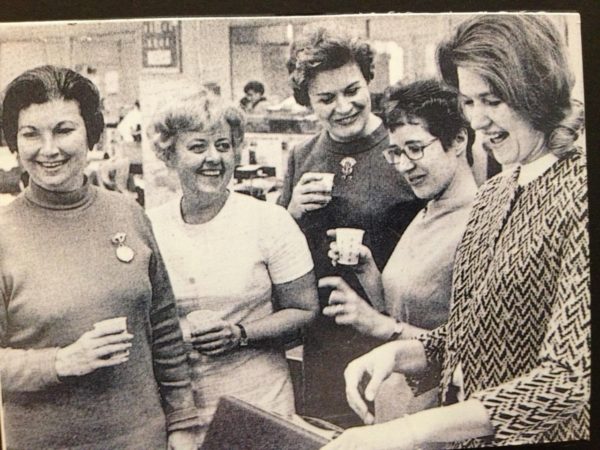
In 1955, Bottini got a job as an art director and illustrator at the Long Island newspaper Newsday. Eleven years later, in 1966, Newsday reporter Dolores Alexander told Bottini about her an interview with Betty Friedan, whose book “The Feminine Mystique” “was all the rage.” Dolores took Bottini to a women’s meeting in New York City “and soon I was helping to found the first chapter of the National Organization for Women (NOW)” with Dolores. Bottini also joined national NOW where she served on the board for three years.
Meanwhile, Bottini finally mustered up enough courage to call an old closeted lesbian school friend to take her to a gay bar. Eventually, she asked a woman to dance. “That changed my life that evening. I just felt when I walked in there by myself, I felt like I had walked into my home, where I was supposed to be. So, over the next handful of years, I struggled,” she told the LA Blade.
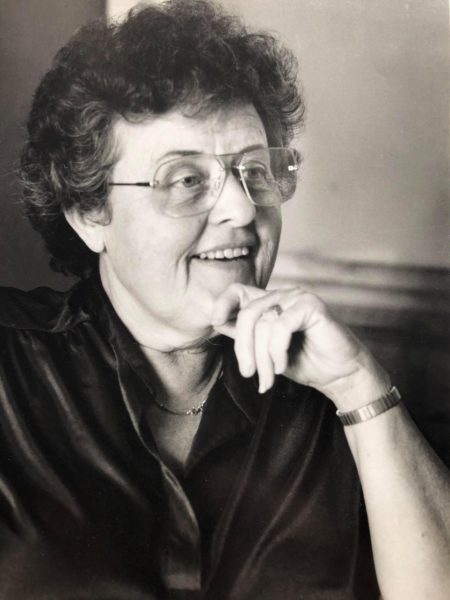
By September 1968, “I just had had it,” living a secret double life. Ivy Bottini had a breakdown — that led to a breakthrough. “I was on the Long Island Railroad in a snowstorm coming back from a New York NOW meeting and when we got to Garden City, I just got off the train,” Bottini said. It was cold. Struggling, she found a payphone, called her psychiatrist, and through tears, explained her circumstances. “I can’t go home anymore. And he said, ‘sorry,’ and hung up. And so I yelled out—it was late at night—I yelled out ‘fuck you!’ I was so angry at him.” She called a friend in Levittown who took her in. She told her husband she couldn’t come home as long as he was there.
Eventually he left but they didn’t actually divorce until 1972. Bottini secured a condo on the Upper Westside. Her daughter Laura moved in with her while Lisa moved in with her dad. “My life became totally different in one fell swoop.” Bottini came out inadvertently in 1968. She was answering a question at a NOW/NY press conference when, without realizing it, she referred to herself as a lesbian. “I accepted that I was a lesbian and as I accepted this, my life changed considerably.”
That awareness led to action and intense interest from other NOW chapters in her consciousness raising groups. In 1969, Bottini put together a panel called “Is Lesbianism a Feminist Issue?” The place was packed. “Oh my god. I think I’ve hit sort of a nerve,” she said later.
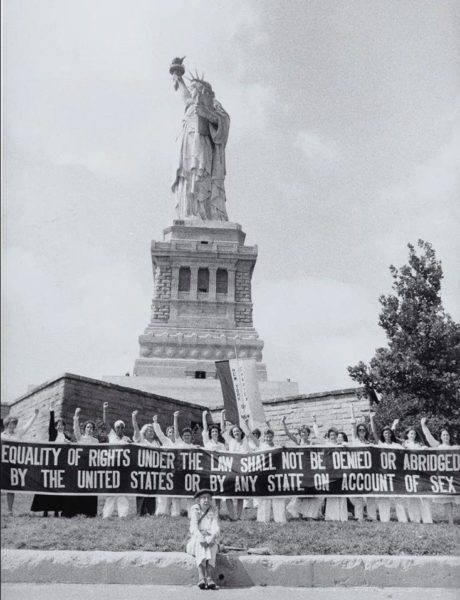
(Photo Credit: The Library of Congress)
Bottini organized the infamous Aug. 10, 1970 NOW/NY three-hour takeover of the Statue of Liberty, unfurling a banner “Women of the World Unite!” from the base. She also organized the Aug. 26, 1970 Women’s Strike for Peace and Equality commemorating the 50th anniversary of the 19th Amendment granting women the right to vote.
That spectacular women’s march down Fifth Avenue drew an estimated 50,000 people. But it also signaled ugly trouble ahead. When Bottini handed out lavender armbands to show solidarity with the oppression of lesbians, feminist leaders such as Gloria Steinem accepted them but Betty Friedan, the “mother” of the feminist movement, threw the armband on the ground and twisted it with her heel.
“My point was, ‘How can you have a women’s movement and leave a huge amount of women out?’” Bottini later told the Los Angeles Times. “But Friedan just never got that. She doesn’t understand that lesbianism is the bottom line of the women’s movement. If you can’t get past the fear of being thought of as a lesbian, whether you are or not, then you never are really free….Sexual politics is civil rights.”
Friedan called Bottini a “lavender menace” and plotted a “purge” of lesbians, maneuvering to get Bottini voted out of NOW leadership. The LA Times notes that in a subsequent 1973 Friedan essay in New York Times Magazine “smacked of downright paranoia; Friedan even claimed a woman was sent to seduce her and then blackmail her into silence while unnamed lesbians took over NOW.” Bottini left NOW and left New York for Los Angeles in 1971.
She shifted her focus to the growing Gay Liberation movement and turned her pain into insightful comedy and acting, studying at the famous Lee Strasberg Institute in Hollywood (before moving to West Hollywood in 1978). That yielded a lesbian feminist one-woman show called “The Many Faces of Woman” which she took on tour around the country for several years – two decades before Eve Ensler’s groundbreaking play The Vagina Monologues in 1994.
“It showed the craziness that women face and society puts on them,” Bottini says in the MSNBC video. “I talked about things that many women are not supposed to talk about like menstruation and birth control and contraception, and the gynecologist visit and lesbian dates. I was breaking ground that no other comedian in this country was doing. I swear to you it’s true: nobody was doing what I was doing. And it was consciousness raising.”
While the 1970s generally associated with disco and sexual freedom, the era was also a hothouse for politics with civil rights turning into liberation movements, including Women’s Liberation and Gay Liberation after the Stonewall Rebellion. And Bottini was in the thick of it.
In 1976, America’s Bicentennial, she was hired as the Women’s Program Director at the Los Angeles Gay and Lesbian Community Services Center, which led to her long association with Center co-founder Morris Kight. In 1975, Kight co-founded the Stonewall Democratic Club, with Bottini joining shortly thereafter. Politicos were eying a significant change in the cultural landscape as evangelical Christian conservatives started speaking out against gay rights.
Then, in 1977, came the 10.0 earthquake. A new religious group called the Moral Majority, led by a publicity seeking Rev. Jerry Falwell and orange juice shill Anita Bryant, used their “Save the Children” crusade to overturn a gay rights ordinance in Dade County, Florida. The Christian Right, which had come to the fore through efforts to Stop the ERA [the Equal Rights Amendment] and overturn Roe v Wade which gave reproductive rights to women, was reborn as a loud and crass anti-LGBTQ grassroots political movement.
MECLA (Municipal Elections Committee of Los Angeles) was founded in 1977 as the nation’s first gay political action committee to press legislators on gay and lesbian rights, just as the “Save the Children” crusade was exported to California. Bottini and Kight organized the Coalition for Human Rights to fight the ugly anti-gay ballot initiative, championed by State Senator John Briggs whose anti-gay attempts had failed in the legislature. Proposition 6 proposed banning gays, lesbians and their supporters from employment in public schools.
The No on Proposition 6 campaign was formed, chaired by MECLA co-chair Diane Abbitt in the South and San Francisco Supervisor candidate Harvey Milk in the North. They hired the consulting firm of David Mixner and Peter Scott as campaign managers — and the managers hired Bottini to serve as the Southern California Deputy Director. Jeanne Córdova a second-wave feminist who also came out in 1968, was media director. Prop 6/Briggs Initiative was overwhelmingly defeated in November 1978, with help from Republican Gov. Ronald Reagan, who had been convinced to oppose the measure.
After the Briggs Initiative victory, newly re-elected Gov. Jerry Brown made a number of historic gay appointments: Stephen Lachs to the LA Superior Court in 1979; Rand Schrader to the LA Municipal Court in 1980; and in 1981, Mary Morgan to the San Francisco Municipal Court and Ivy Bottini, 55, to the California Commission on Aging, the first “out” lesbian or gay person to be appointed to a California board or commission.
Bottini met successful real estate broker and 12 Step fixture Gail Wilson during the fight against the Briggs Initiative. Wilson and her gay partner held a conference during which they told the audience not to come out, just do your jobs. “I thought I was going to go through the roof because that’s exactly why we were being attacked — because they never thought we’d fight back,” Bottini told the LA Blade. “So, I was at odds with Gail. I got up and spoke and I didn’t mince any words. And I thought, ‘well, she’s gonna hate me for the rest of her life.’”
Instead, Wilson changed Bottini’s life. “She was a wonderful, magnanimous human being. And she said to me a month or so later, ‘what are you gonna do [with your life]’? I said, ‘well I don’t know. I guess I’ll go back to the Center.’ She said, ‘No, no, don’t do that. Go get your real estate license and come work with me in my real estate office. I said, ‘okay.’ I mean, you show me a door that’s open and I’m gonna walk through it, ya know?” Bottini became one of Wilson’s top sales brokers.
Meanwhile, the Moral Majority spawned other rightwing conservatives, who elected Reagan president in 1980. As a reward, Reagan gave the anti-gay haters administration posts and when a mysterious disease started killing gay men, they did nothing.
In 1982, Ken Schnorr, an old friend from Long Island, collapsed and died a week later. His mother called Bottini, freaked out about all the black and blue marks on his body, thinking the hospital hurt him.
“After Ken died, something said to me there is more to this than we see,” Bottini said. “So, for some reason, I just picked up the phone and called the CDC. I had never done that before. ‘Look, this just happened to my friend. Do you have any answers? The hesitancy at the other end of the line, the hemming and the hawing before they would say anything — I just knew it was bad.”
The CDC official explained the bruises as Kaposi sarcoma, usually found in elderly Jewish men. “And that was the explanation,” she said. “I got off and thought, ‘no, this doesn’t make sense because Ken was one of three first guys diagnosed with Kaposi in town, in West Hollywood, in L.A., and that started me on working to find out what the hell was going on. It was just horrible.”
Shortly after Schnorr’s death, Rep. Henry Waxman, aided by his gay deputy Tim Westmoreland, held the first congressional hearing on what was then called GRID — Gay Related Immune Deficiency – at the Gay Community Services Center on Highland Ave. “We all met in the lobby and under the stairs on the first floor,” Bottini said. “Waxman’s basic message was spread the word: nobody really knows how it’s passed.”
After a couple weeks with no action, Bottini decided to hold a town hall. She called Dr. Joel Weisman, Schnorr’s doctor, to help inform the community. “Nobody really had a clue. But I felt very early on that it was bodily fluids. That’s the only thing that made sense to me. Because if it was airborne women would be getting it, everybody would be getting it and that wasn’t happening,” Bottini said.
Fiesta Hall in Plummer Park was jam-packed. “It was all guys — and Dottie Wine (Bottini’s girlfriend) and I. And Joel talked about transmission and he believed it was bodily fluids, too. And I thought, ‘I’m not crazy.’”
The next year, in 1983, Bottini founded AIDS Network LA, the first AIDS organization in Los Angeles. It served as a clearing house for collecting and disseminating information. In 1984, Bottini helped co-found AIDS Project Los Angeles, now APLA Health.
Though the love remained, a three-year feud blew up between Bottini and Kight, who did not believe HIV/AIDS disease was transmitted by bodily fluids. Kight changed his mind just in time to reconcile and fight the 1986 Lyndon LaRouche Prop 64 AIDS quarantine initiative that would “put gay men behind chain linked fences.” Bottini was Southern co-chair for the statewide No on Prop 64 campaign; Córdova helmed media relations. The initiative went down to a stunning defeat and Bottini spent much of the rest of the 80s organizing marches, “die-ins” and protests to get funding and services for those impacted by the AIDS epidemic.
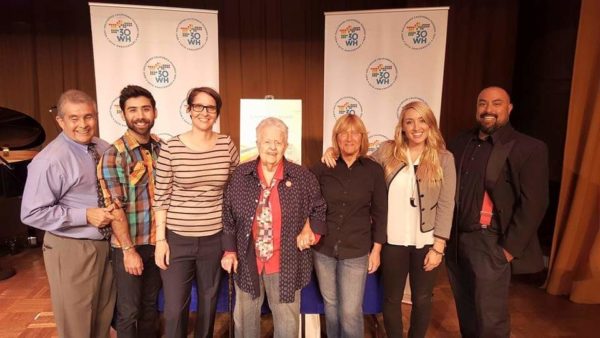
The work continued into the 1990s, interspersed with painting and Bottini receiving the Drama-Logue Award for “Best Performance” in her play, “Against the Rising Sea.” She also joined the City of West Hollywood’s Lesbian and Gay Advisory Board in 1999, serving as board co-chair for ten years. Her work there included bringing attention to domestic violence abuse in the LGBTQ community, helping focus attention on the crystal meth crisis, and supporting the annual Dyke March.
Bottini also conceived and spearheaded the first effort to provide affordable housing for gay and lesbian seniors, culminating in the founding of the nonprofit Gay & Lesbian Elder Housing in 2005. “I’d laid the groundwork by organizing the community and provided the leadership that resulted in obtaining a grant from the State to move forward with the housing project,” known as Triangle Square in Hollywood, Bottini said. And she kept at it, telling a rally in 2018 to “get off your asses” and vote!
Bottini grieved her beloved West Hollywood before health issues forced her to move to Florida. “What I think I am going to miss most is the camaraderie in the city and the access to the city council and that a very palpable vision could be fed into the city council and the city council would start to take it on and then come back to the community to make sure there’d be discussion,” Bottini said. “That doesn’t happen anymore but that’s what I will miss. I will miss walking down the street and knowing most everybody that I pass. Now I know hardly know one person.”
Asked how she’d like to be remembered, Bottini told the LA Blade: “I’d like to be remembered as someone who had a really good sense of humor and could find something funny or strange or out of the ordinary in just about everything I worked on. The early city was creatives. We’re not creative anymore — we’re not. We’re not creating anything.”
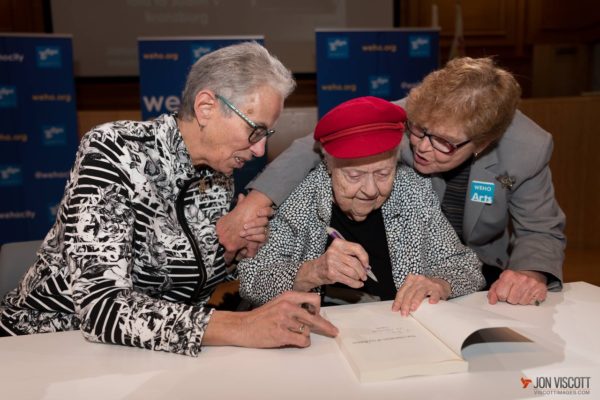
Bottini also appreciated being appreciated. At a packed book signing, “people came up to me and say things like ‘I’ve been watching what you do for 30 years.’ Or ‘you don’t remember me but 20 years ago…’ There were a lot of memories that came to me. I’m not saying I remembered everything they were talking about – the politics, the conscious raising, the comedy — but they did.” And always there were gay men who approached her and said, “we never met but you saved my life with that town hall.”
“I had no clue how I touched the people in the city. I can be kind of hard-nosed sometimes when I speak. Sometimes I’d come home and go, ‘oh, maybe I shouldn’t have said that.’ But none of that hit me” after the book signing.
“It was like this huge family reunion,” Bottini said. “They were remembering how I had change their life. And that was the reason that I was doing things. I was trying to save their lives. I saw the danger that we were about to get hit with while we were walking through [life]. And it was happening and we didn’t even know it — people’s lives were just being torn apart with deaths and children being taken away from lesbian mothers and…It was too much. I saw a tapestry of hurt and that’s what I was fighting. It all adds up to being able to live a life of safety and not live a life of fear.”
Editor’s Note: Ivy Bottini was a significant woman pioneer in the LGBTQ movement and her story touches upon every aspect of a significant time in the history of the long fight for Equality for LGBTQ people. In part 2 of Karen Ocamb’s tribute, Bottini’s friends remember.
Friends remember
Friends react to Ivy Bottini’s death, on the day the House of Representatives passed the Equality Act
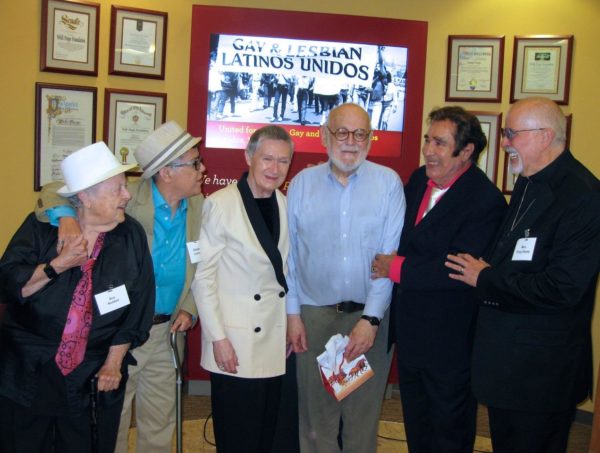
“She lived this incredible life. I mean, her history with the women’s movement, as well as the lesbian movement in America and the larger LGBTQ movement was just incredible. As far as I’m concerned, she was a real pioneer in making a difference than all of our lives. Both Ivy and Morri [Kight] were excellent spokespersons for our community. But she had a knack for being able to throw one-liners out, too, so she could quickly stop nonsense by saying something funny.
People don’t realize — it took me having lesbians like Ivy who made me realize that women even had another layer than I did as a gay man. They could be smart as a whip, for example, and work for a bank but always hit that glass ceiling. The bank would say – and this actually happened with one of my church members — you know, we would love to make you a general manager. I mean, you’re a smart as a whip. You do all this, but you’re not married. She couldn’t say, ‘yes, but I’m a lesbian. I’m not going to leave.’ Because they were trying to say, ‘you’ll get married and you will have children and leave us. And we don’t want to invest in women.’ Or she’d say, ‘well, I’m a lesbian. I’m not going to get married.’ And they’d say, ‘Oh, we’re going to fire you.’ That was the difference right there. With gay men, we were not questioned much about our sexual health as much as you might think….One of our clergy, Frieda Smith, told me how she worked in a store and she ran their dark room developing photographs and her boss would sexually harass her. She really woke me up to things, too.
Ivy should be remembered as a strong woman who have made a difference, not only in women and lesbian rights, but for all of us. And with NOW, she also was an incredible example of not giving up the fight, even if there’s an organization that doesn’t want you there.”
Rev. Troy Perry, Founder of MCC – Metropolitan Community Church (Ivy’s church), co-Founder of Christopher Street West, longtime gay activist.
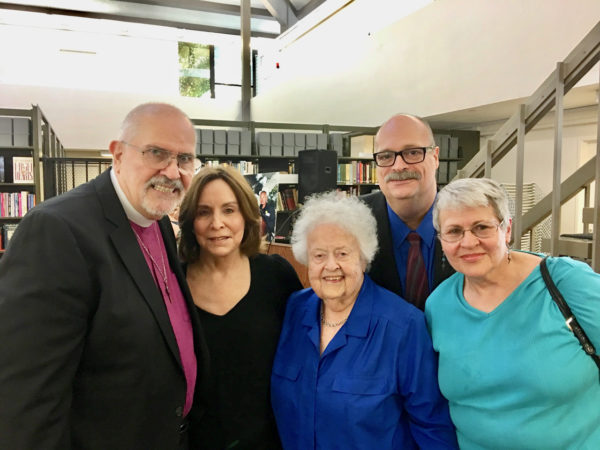
“Ivy Bottini stepped into my life a few weeks short of 46 years ago, at a NOW Consciousness Raising Conference in San Francisco. Things have not been the same since! She was a multifaceted difference-maker and spoke out when she observed injustices. She was a visionary who could see dangers before evident – think John Briggs and AIDS – and took action, often at great resistance from other community activists. She loved to mentor young people and others new to the addiction of activism and watch them claim their own power to make a difference.
Never seeking accolades and recognition, both flowed her way as others recognized and appreciated her value to the many causes she impacted.
So honored and proud to have experienced so much of life with Ivy. So much more could be said, but it will have to wait. Except, I love you, Ivy!”
Dottie Wine
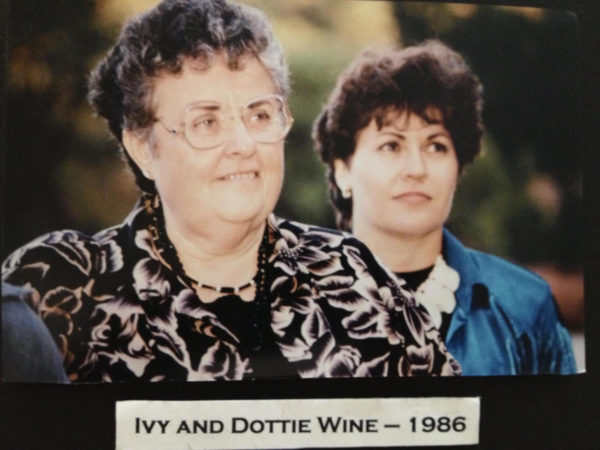
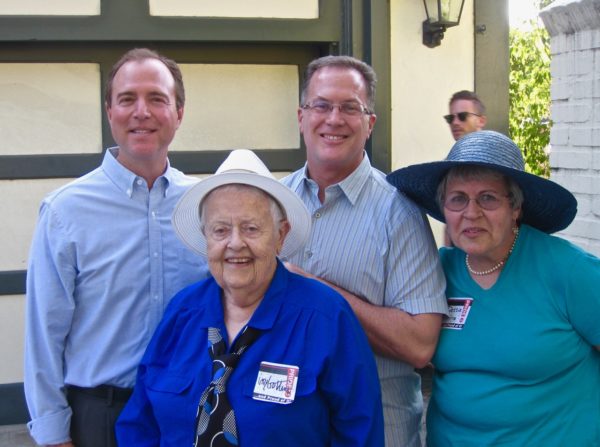
“No on 6 was the first time that our community was targeted by a statewide ballot initiative in any state. It was also the first time we came together as a community and organized and fought back. Ivy had a history of fighting back when she was in New York. Then NOW called her a ‘lavender menace’ and threw her out. She was always a grassroots person — she always wanted to fight for full equality for our community. And when you look at her life, that’s exactly what she did. That was who she was.”
Diane Abbitt, MECLA board co-chair, No on Prop 6 campaign co-chair, Equality California board co-chair.
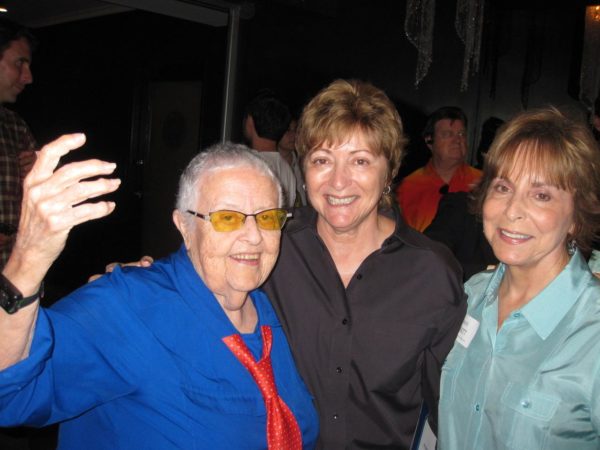
“I’m devastated by the loss. It feels like the end of an era of a certain kind of activism, that Ivy represents. On a deeply personal level, she was my earliest political mentor. I was still in my 20s when we first met. She took me under her wing and taught me so much. At I time when I was still learning about oppression sickness, Ivy taught me not only about male privilege & white privileged, but about class privilege (in the context of the Gay Academic Union). Her wisdom and maturity saw me through many personal, political, and professional crises. I’ll miss her so much.
We expect to have a ZOOM event soon, to honor Ivy. We’re also hoping to curate an exhibit of her art as soon as we can safely do so.”
Teresa DeCrescenzo, executive director of GLASS.
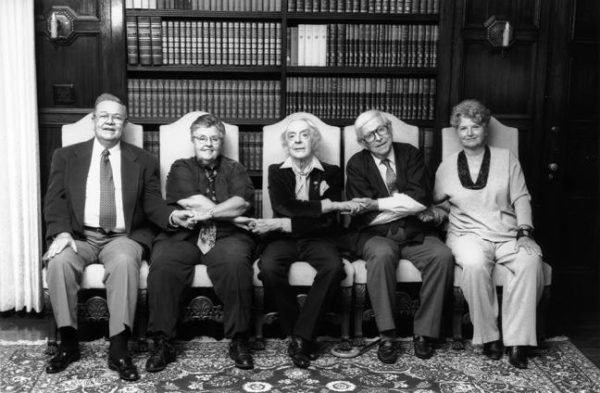
(Photo courtesy ONE Institute)
“I have so many memories with Ivy. We served 12 years together on the WeHo Lesbian Gay Advisory board, ending around 2014/2015. Something that always stood out was Ivy’s drive for activism. She loved seeing the younger generations on the board. She was always telling them ‘we need to get in the streets!’ Since then, I venture to say that many off those younger generations have been “in the streets”.

Above is a picture of Ivy, me, and some of LGAP members in, I believe, 2014.”
Ruth Tittle, business leader, philanthropist, activist.
“Ivy Bottini was a great lesbian feminist activist. I am sure that at the very minute she passed, her best butch buddy, Jeanne Cordova, reached down to help her up.”
Robin Tyler, business leader, activist, comedienne, marriage equality plaintiff
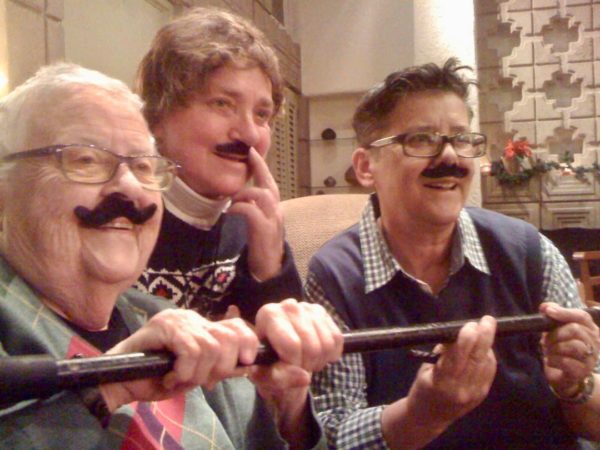
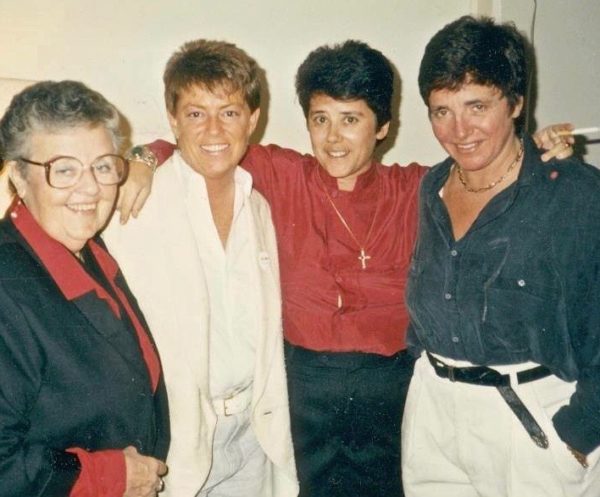
“Ivy Bottini changed my life in ways too numerous to mention. It all really started around the year 2000 when she said to me after I ran into her at an event, ‘Kid, you need a mentor!’ I had known Ivy for a few years prior to that as an artist and as my landlord, and we had lost contact for a few years but after 2000 I started to spend more time with her and learned about her life as an activist. Little did I know that when I accepted her gift to be my mentor that I would gain a family member, a colleague, a confidant, a teacher, a trusted advisor and a dear, dear, dear friend.
I find solace in knowing that the loved ones no longer with us and whom she introduced me to over the years have greeted her on the other side today. An army of LGBT activists who have waited patiently to be reunited with our wonderful friend. I feel an obligation to Ivy, to stay involved in the work to make this a better world.”
Sue Sexton, Director of Development & Marketing at ONEgeneration, West Hollywood Lesbian and Gay Advisory Board member.
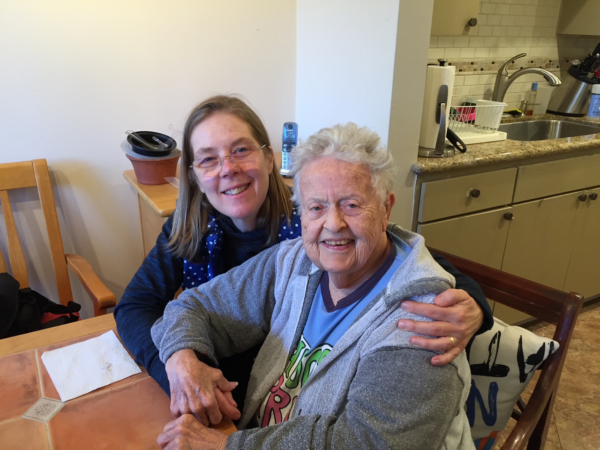
“I first met Ivy in Justin Smith’s acting class. I was new to the LA lesbian and gay community, but I had heard about Ivy: she was ‘the talk.’ We hit it off immediately. I was drawn to her passion for equality, her passion for true expression of self. In Justin’s class we were able to play all the characters — it didn’t matter the gender. We all got to know each other and ourselves. Ivy directed me in a scene from “Kennedy’s Children.” I played the Marilyn Monroe character. We laughed and reminisced about this experience often.
It was in this class that I understood how much Ivy enjoyed acting, performing on any level — but she loved theatre. I started The Ivy Theatre specifically to give voice to lesbian playwrights so that ‘our’ life experiences could be portrayed on the stage. We could play all roles if we chose to because we could. Ivy embodied ‘female voice’ — one of such strength and direction, one of compassion and passion — a voice that could lift one up and shut one down when necessary. A voice that said it like it was a voice of ‘Truth to Power!’ That’s what I wanted in my theatre company and that’s why The Ivy Theatre was born.
There is currently a play that is being developed by Austin writer Kathy Center based on a short story I wrote where the lead character is based on Ivy. It’s interesting because Kathy didn’t know Ivy and so she read about her and one of Ivy’s quotes that moved Kathy the most was ‘if something needs to be done, you just do it.’ No truer words.”
Marian Jones, founder and artistic director of The Ivy Theatre (1996-2006).
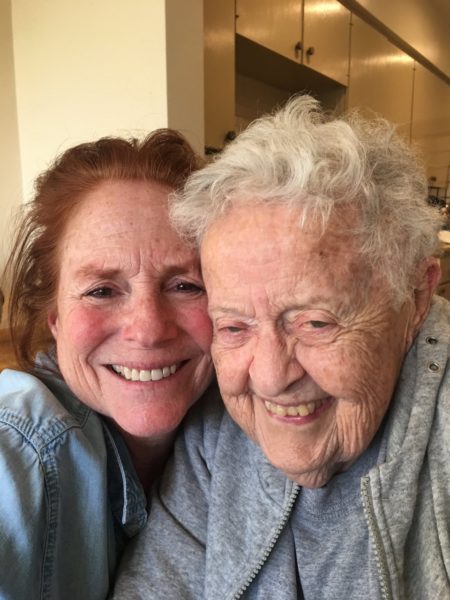
“What I loved best about Ivy was her unapologetic passion for grassroots activism. Especially feminism and LGBT rights. She hated elitism and loved regular, everyday people. I worked with her over the years – I remember best her passionate speeches for No on 64/No on LaRouche – the heinous ballot measure in 1986 that would have quarantined people living with HIV/AIDS. I worked on the campaign and Ivy was our most effective weapon. We’d send her to speak at a church, a rally, any crowd anywhere – and she’d bellow her fierce opposition, rile up the troops, persuade allies, and raise tons of support and money.
On a personal note, she was a fierce supporter of my valiant insurgent campaign for CA Assembly in 2012. I’ll never forget Ivy in her mobile chair, festooned in Torie! stickers, wheeling at full speed around the Democratic convention in Feb 2012, buttonholing anyone who would listen about how great I was, how angry she was the gay Speaker supported a straight woman over me…she didn’t give a hoot what anyone thought of her boisterous loud voice.
Ivy was fierce. And a fixture in WeHo and LA queer and feminist politics for decades. I’ve missed her since she moved to Florida. The world is quieter and less vibrant without her.”
Torie Osborn, longtime progressive activist.
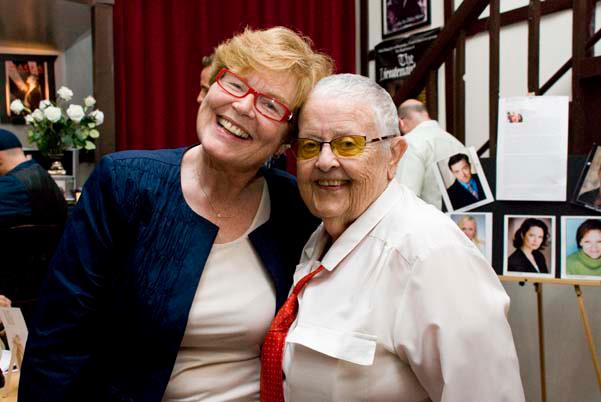
(Photo courtesy The Outlaugh Comedy Festival, via Facebook)
“Ivy and I became friends after we were both invited to speak at APLA on the same panel. I could hear her at the end of the table but couldn’t see her around the people between us, she was so short! I just loved what she was saying, her ideas. Afterwards, I introduced myself and asked if I could take her to lunch sometime. She thought I was hitting on her and said yes.
It was the beginning of a thirty-year friendship based on a shared sense of humor about life, political activism, strong opinions, creativity and her wondering when we would start dating. Our banter was effortless. We have traveled together, spent time with each other’s families and have shut down countless restaurants talking late into the night. She painted my portrait in 2005 — her last portrait just before her eyes took another turn toward darkness.
Ivy was one of the most interesting, funny, and astute people I have ever known.”
Producer Elaine Estelle Suranie.
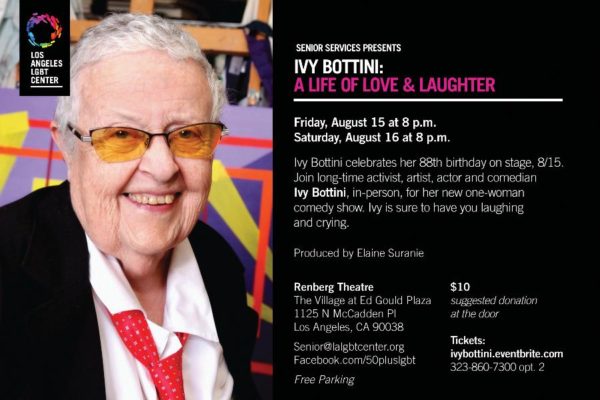
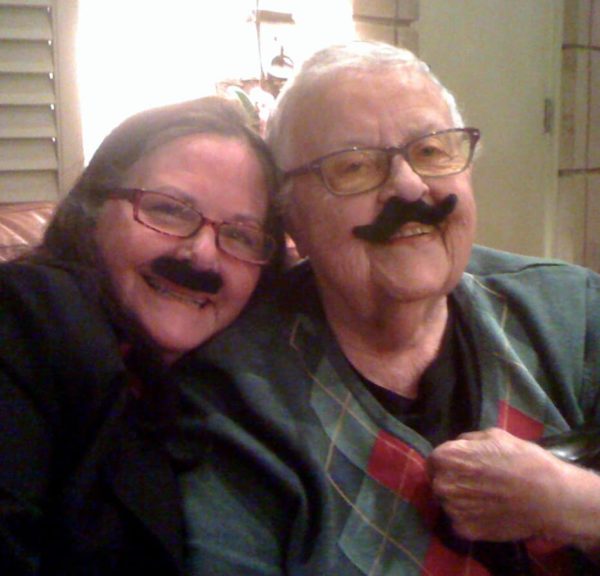
“I remember reading about Ivy in the LA Times back in ’75 when I was 10. ‘Bottini comes on like a carload of sinners at a revival meeting. She prances onstage, amid bright lights… No shoes, no props. Just Ivy, her wit, and her microphone…’ I remember thinking, ‘I have to meet that woman someday.’ Who would have known that our paths would cross in so many ways. In the ’80’s, I got my mother to hire her to be our real estate agent…my attempt to expose my mother to lesbians who were successful and not living tortured lives. Years later, through my circle of friends, I was able to enter her circle of friends. Learning about the world through her eyes is a gift that, at the moment, is beyond my ability to describe. Her tenacity, fearlessness, and good humor are lessons for us all to live by.”
Jeannette Bronson, Administrator at LA County Dept of Children and Family Services, Founder of Black Lesbians United.
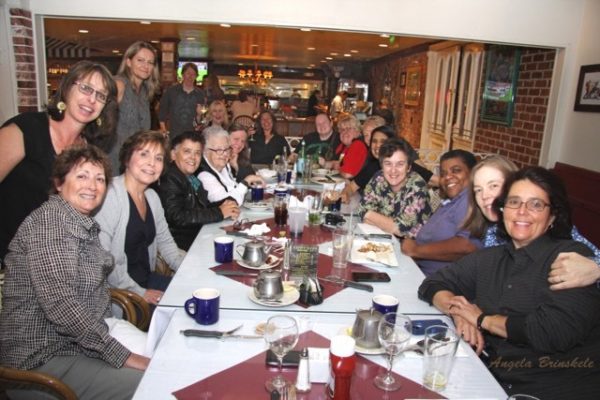
“Ivy was a source of strength for women and others who were trying to break free and define themselves as equal players in our nation. Despite being ousted by NOW for being a lesbian, she never gave up the fight for equality for women. In later years, she partnered with Morris Kight to help move the LGBT community into the awareness of the political class. She was a mencha, a friend and a supreme artistic soul. She was a great mentor to me.”
Eric C. Bauman, past president Stonewall Democratic Club and former Chair California Democratic Party.
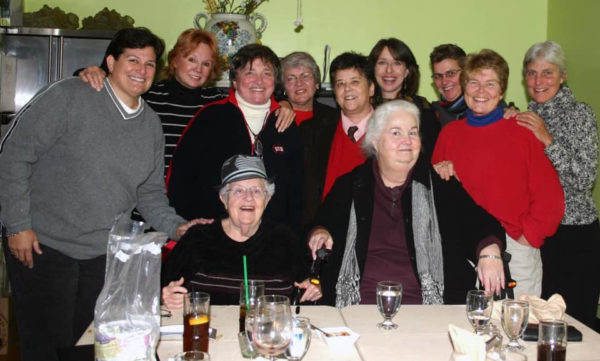
“Ivy Bottini was a triumphant force of nature. When I first moved to Los Angeles, she was one of the first people who reached out to me to welcome me with open arms and to give me access to her world. She transformed our nation; she transformed women’s rights; she transformed LGBT rights; and she kept going. She was a force of nature during the AIDS crisis and a transformative figure for West Hollywood and so much more. I will miss her. I will miss her phone calls. I will miss her energy. I will miss her love. Rest in peace, Ivy.”
Troy Masters, publisher of the Los Angeles Blade.
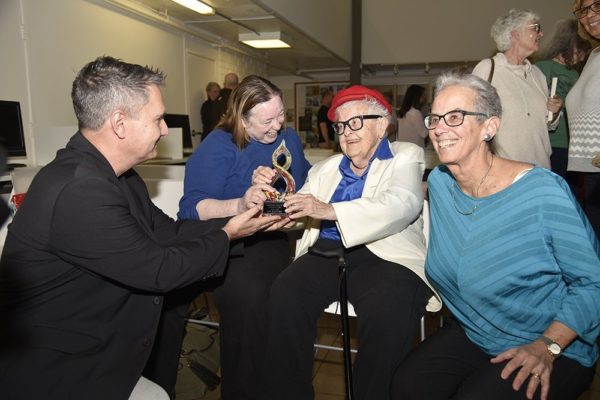
“Ivy wasn’t necessarily a mentor to me. She was a friend. But she was a friend who I would go to to get a different perspective on the directions that I already knew I was going to go in. My friendship with Ivy was dear and it was close, but her frustration with me was also funny and a perfect example of who she is
About 2 months before she passed, our last phone call — we talked about some political something or other that I was involved with. Ivy was always so angry at me for not being more angry, for trying to be diplomatic. We talked and talked and talked and when it was time to hang up, we said our ‘I love You. I’ll talk with you soon’ and Ivy THOUGHT she hung up……which enabled me to hear her say in that Ivy Long Island accent: ‘WHY does she ask me if She NEVER takes my ADVICE! I can’t remember the exact words but it was definitely her frustration with my lack of BullsHornOut style of confrontation. I hung up the phone and literally laughed out loud. I treasure those last words from her.
Ivy was angry at me for not being angrier and I was often angry with her for not being angry at things that DID get me angry. And that’s how our friendship grew as we shared our little office at Frontier’s Magazine.”
Marna Deitch, Founder of Motorcycle Contingent for Equality and Ivy’s friend for close to 20 years.
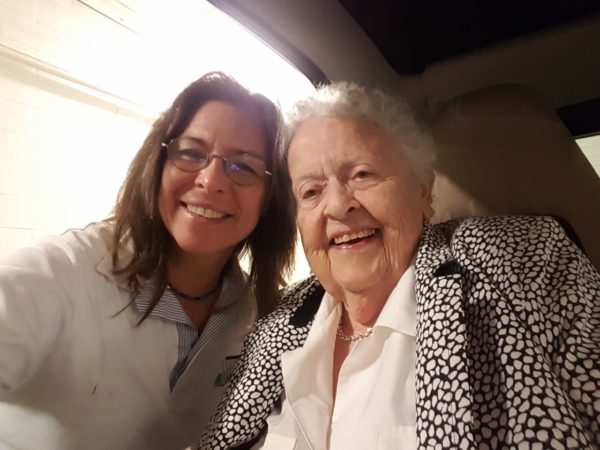
And lest we forget this valuable friendship:
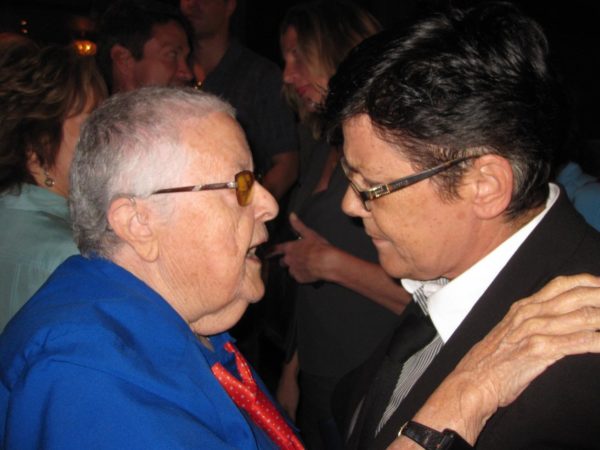
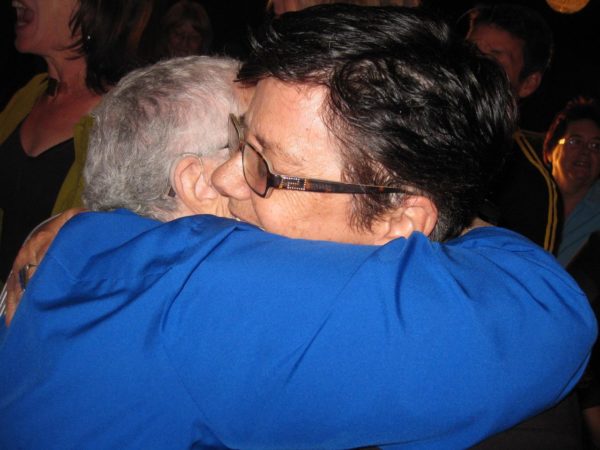
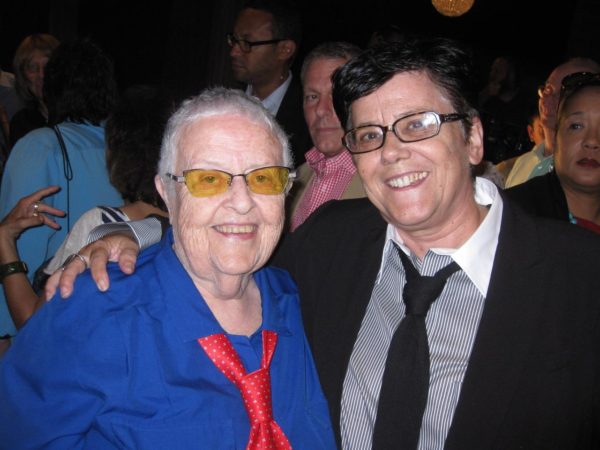
Karen Ocamb is an award winning veteran journalist, the former news editor of the Los Angeles Blade & a longtime chronicler of LGBTQ+ lives in Southern California.
History
Los Angeles Blade celebrates 8 years!
SoCal’s LGBTQ+ news source celebrates 8 years of news catered to the LGBTQ+ community in print and online
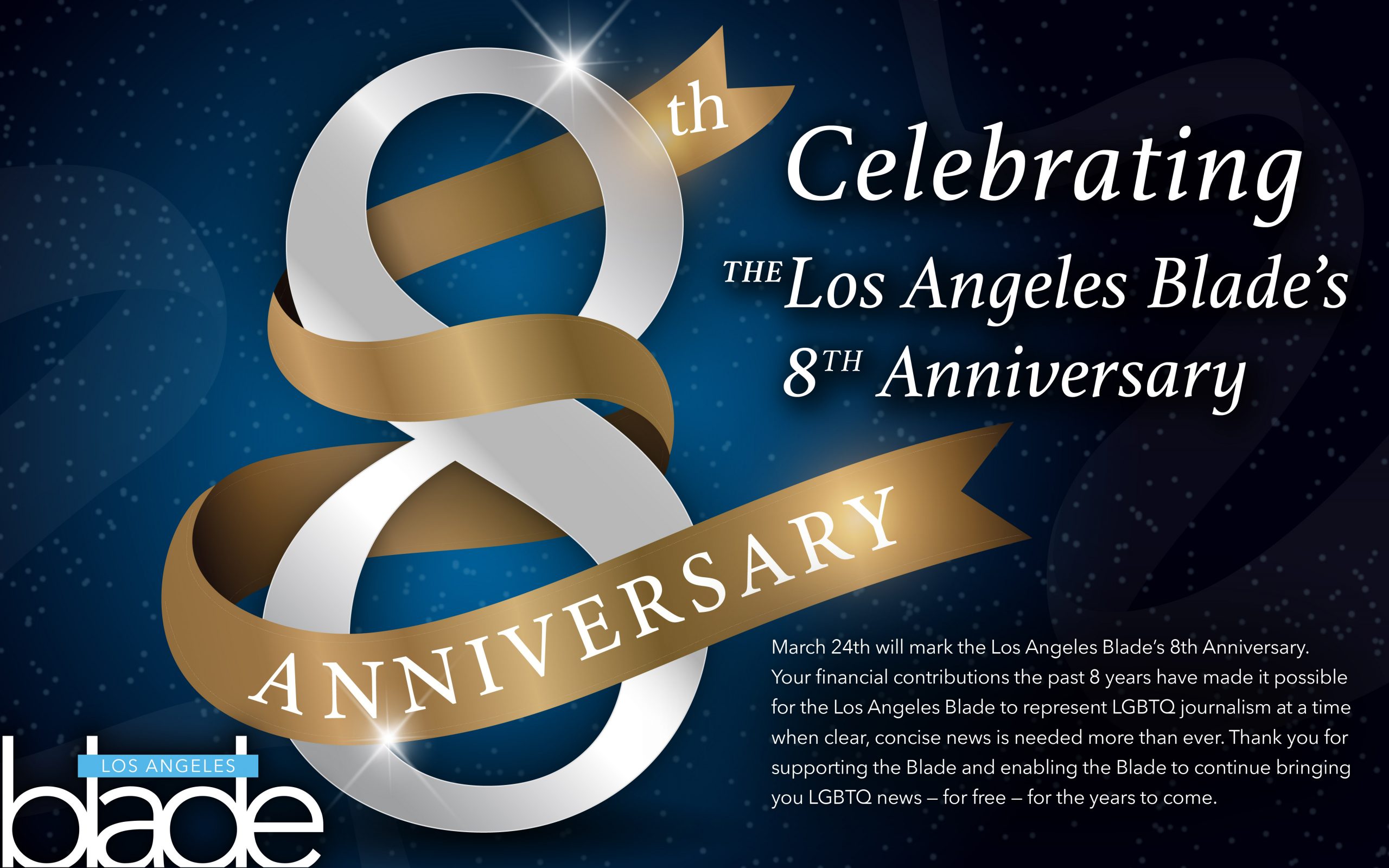
March 24th marks the 8th anniversary of our newspaper. Even as the political attack on the queer community wages on, we continue the legacy that Los Angeles Blade founder Troy Master began. Our promise to the LGBTQ community is to continue to bring you the latest in political, social, entertainment, nightlife, and activist news, for and by the community. Our voice will stay steady and strong and remain the leading news source for and by the queer community.
In addition to bringing you the latest in news, we will continue to highlight leaders from the community from the social and political world. Our initiative to build bridges with the Latinx community continues through our close relationship with CALÓ NEWS with weekly reporting on issues that affect both groups. This year we will be kicking off Pride season with the return of our Best in LA Awards show, coming back bigger and better than ever.
Among our new initiatives this year, we are returning to the community with a series of free panels and discussions, covering important issues that are affecting the community, queer and beyond. We will be working with our power partners from the non-profit world, government offices, and social organizations to remain active and visible in an effective way.
We are also growing our local writing team to better reflect the diversity that exists around us.
We continue to be Los Angeles’ only LGBTQ bi-weekly newspaper and the City’s largest, most frequently distributed media in print and online. Our sister newspaper, The Washington Blade, is the nation’s longest-running LGBTQ newspaper founded in 1969. It is also the only LGBT media member of the White House Press Corps.
As the new publisher of the Los Angeles Blade, I will work hard to honor the brand of The Blade and the work that Troy, our previous journalists and editors, and our community partners did to make us who we are today. A very heartfelt thank you to our readers and advertisers who continue to support our efforts.
Despite what is going on socially and politically towards the queer community, we will continue to thrive.
Alexander Rodriguez, Publisher
Please consider supporting the continuing efforts of the Los Angeles Blade with your financial contribution. For just dollars a month, your support makes vital LGBTQ journalism possible at a time when clear, concise news is needed more than ever.
For advertising opportunities, please contact Alexander Rodriguez at [email protected]
Today marks our 8th anniversary as SoCal’s LGBTQ+ news source and we want to thank you all for the support through the years. The Blade was founded in 2017 by Troy Masters, two years after he moved to Los Angeles in search of community and a fresh start for the next stage in his journalism journey.
He founded the Los Angeles Blade, because he saw the overwhelming need for accurate and unbiased news reporting for the LGBTQ+ community during a time where many other mainstream news outlets were overlooking the stories that affected our communities, such as the AIDS crisis.
In our everyday work since then, we aim to cover the issues that not only affect us, but that also inform us and spotlight our amazing talents, skills and ability to unite. We always aim to be a beacon of light, education and information for our communities because under this current administration, Trump has seemingly vowed to take us back into the dark ages and erase any and all progress we have painstakingly made throughout time.
My goal as editor is to include voices that make up our community and continue building trust with those voices, so that our work can serve you and everyone else under the LGBTQ+ and QTBIPOC umbrellas.
It’s true, Democracy dies in darkness and as members of the media, we must double-down in our efforts to provide accurate, informative and relevant news to our communities now more than ever.
The Blade has seen leadership shifts within the last six months, including myself, and we hope that these changes encourage you to support us and see how we continue growing.
Please reach out to us to discuss how we can better serve you or our communities. Don’t forget to subscribe to our weekly newsletter and donate to the Blade Foundation if possible.
Thank you all so much for your trust and support during these particularly difficult times.
Gisselle Palomera, Editor
Contact me at [email protected].
History
LGBTQ+ History Archive Gains Momentum: Personal Stories Project Partners with George Takei
Increased Awareness Through Social Media Reach

The LGBTQ+ History Archive Personal Stories Project is experiencing a surge in submissions. This decade-long effort documents LGBTQ+ history through personal narratives. Its success stems from a new partnership with actor George Takei and the .gay domain provider.
Charles Chan Massey co-founded and directs the Personal Stories Project. He credits the partnership’s success to Takei’s vast social media following. Takei, a vocal LGBTQ+ rights advocate, encouraged his 3.3 million X followers to share their stories.
Takei posted: “Each of us in the LGBTQIA+ community has a powerful coming-out story to tell. I want to hear yours. Head over to personalstories.gay today. Fill out the form to be featured on the Personal Stories website. I’ll be sharing some throughout the month to inspire others.”
Amplifying Community Voices
Logan Lynn is the creative director of .gay Domains. He emphasizes the partnership’s role in amplifying vital LGBTQ+ voices.
“Pride is about honoring and celebrating the depth of our communities,” Lynn said. “What better way to showcase this than through stories from people living LGBTQIA+ lives?”
Preserving Everyday Stories for Future Generations
Massey founded the LGBTQ+ archive project in 2012. His mission: preserve narratives of ordinary LGBTQ+ individuals, not just prominent figures.
“I wanted to archive our community’s history,” Massey explained. “Not just prominent members, but regular people who needed a platform. Regular people can identify with regular people. It’s important to see someone just like you.”
Massey maintains an online archive. This ensures accessibility of these oral histories for the LGBTQ+ community.
“As long as the internet exists, it can archive our stories,” Massey said. “We’re preserving stories for future generations. We’re also helping people find others with similar journeys.”
From Facebook Page to Registered Charity
The LGBTQ+ History Archive Personal Stories Project started as a simple Facebook page. It has evolved into a dedicated website and registered charity. It now supports LGBTQ+ organizations across the US and Canada.
Many participants share how LGBTQ+ organizations helped them. The Personal Stories Project encourages donations to these charities. Massey reports raising $15,000 to $25,000 annually for over 20 non-profits.
“95% of our budget goes to other 501(c)(3) organizations,” Massey said. “We support large and small community-based groups. A $200 donation can make a significant difference.”
A Diverse Collection of Experiences
The Personal Stories Project has a vast collection of LGBTQ+ stories. Massey is often struck by the depth of experiences shared.
“I met Peter, who was 85 at the time,” Massey shared. “He served in the Air Force, modeled in the 1940s, started an ad agency, and lived through the AIDS crisis. His story shows the power of these narratives.”
The project seeks submissions from all parts of the LGBTQ+ community. This includes people of various ethnicities and generations.
“People often think their story isn’t interesting,” Massey said. “But when they share, it’s captivating! Someone will identify with your story. Sharing is a powerful gift and a responsibility.”
Share Your Story
Do you have an LGBTQ+ story to share? Visit personalstories.gay to contribute to this important historical archive.
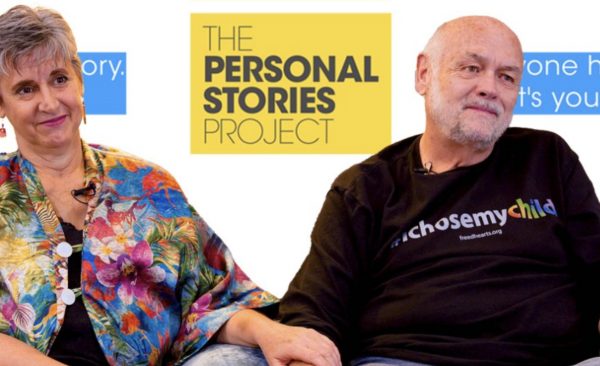
Image from Personalstories.gay website
History
The world-changing decision by psychiatrists that altered gay rights
December 15, 1973, was hailed by gay rights activist Frank Kameny as the day “we were cured en masse by the psychiatrists”
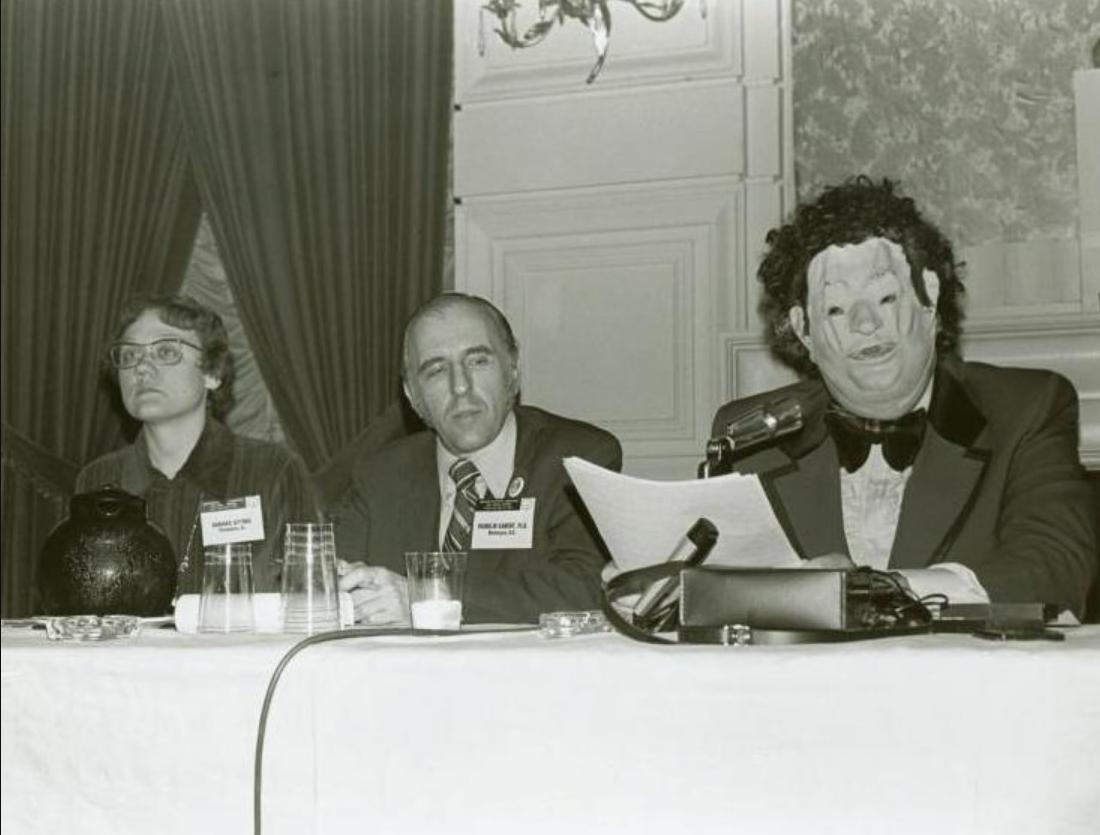
WASHINGTON – Fifty years ago this past Friday, on December 15, 1973, a decision by the American Psychiatric Association (APA) at its annual convention was hailed by gay rights activist Frank Kameny as the day “we were cured en masse by the psychiatrists.”
The board of trustees of the APA voted to remove homosexuality from its Diagnostic and Statistical Manual of Mental Disorders, which is used by health care professionals in the United States and much of the world as the authoritative guide to the diagnosis of mental disorders.
Washington Post writer Donald Beaulieu noted in an article published on the 50th anniversary that newspaper stories the next day mostly treated it as a technical change rather than a seismic shift that would transform the lives of gay people. But for gay rights activists Barbara Gittings, Kameny, Paul Kunstler, Jack Nichols, Elijah ‘Lige’ Clarke, Lilli Vincenz, and Kay Tobin Lahusen, it was groundbreaking.
Kameny and Nichols in 1961 had formed The Mattachine Society of Washington, D.C., that the others were actively engaged in with the purpose of conducting gay rights protests at the White House, the United States Civil Service Commission, and the Pentagon. By the late 1960’s the group also focused on efforts to declassify homosexuality as a mental illness.
Kameny and Gittings were determined to get the APA to act. Nichols, Clarke, Gittings and Lahusen would create some of the earliest gay themed content, stories and columns in early gay national publications.
Nichols with his partner Clarke, wrote the column “The Homosexual Citizen” for Screw magazine, a pornographic ‘straight’ tabloid publication in 1968. Lahusen’s photographs of lesbians appeared on the cover of The Ladder as Gittings worked as its editor. The Ladder, published by the Daughters of Bilitis (DOB), was the first national lesbian magazine.
In the August 1964 issue of The Ladder, Gittings’ editorial blasted a medical report that described homosexuality as a disease, writing that it treated lesbians like her more as “curious specimens” than as humans.
In 1971, some seven years later at the annual meeting of the APA, Gittings, Kameny and fellow gay activists stormed the meeting and Kameny seized the microphone, demanding to be heard. The Washington Post reported:
Kameny, who had lost his job as an astronomer with the Army Map Service in 1957 because he was gay, grabbed the microphone from a lecturer at the convention and addressed the room. “Psychiatry is the enemy incarnate,” he told the shocked audience. “Psychiatry has waged a relentless war of extermination against us. You may take this as a declaration of war against you.”
For the APA’s annual meeting in 1972, Kameny and Gittings organized a panel on homosexuality. When no gay psychiatrist would serve on it openly for fear of losing his medical license and patients, Gittings recruited Dr. H. Anonymous (John E. Fryer, M.D.), who appeared masked and using a voice modulator.
Gittings, Kameny and Dr. Anonymous asserted that the disease was not homosexuality, but toxic homophobia. Consequently, the APA formed a committee to determine whether there was scientific evidence to support their conclusion.
The Post noted: “This is the greatest loss: Our honest humanity,” Fryer said. “Pull up your courage by your bootstraps and discover ways in which you and homosexual psychiatrists can be closely involved in movements which attempt to change the attitudes of heterosexuals — and homosexuals — toward homosexuality.” Fryer received a standing ovation. He would not reveal his identity until 1994, 22 years later.
“In 1973, with Gittings and Kameny present by invitation, the APA announced its removal of the classification. Kameny described it as the day “we were cured en masse by the psychiatrists.” At the time, the “cures” for homosexuality included electric shock therapy, institutionalization and lobotomy. With the APA’s retraction, the gay rights movement was no longer encumbered by the label and its consequences.”
A symposium to address the issue occurred at the APA convention in Honolulu in May 1973 the Post reported. Panel members would represent both sides of the argument. There were those who fought the reclassification including one speaker who advocated retaining the homosexuality diagnosis, Charles Socarides, who received mostly boos from the crowd. Socarides asserted during the discussion, “All of my gay patients are sick.” According to Lawrence Hartmann, a psychiatry professor at Harvard University who served as APA president in the early 1990s, another panelist replied, “All of my straight patients are sick.”
According the Post, the last to speak was Ronald Gold, media director for the Gay Activists Alliance and the only panelist who was not a psychiatrist. Gold, who as a child was subjected to aversion therapy by a psychoanalyst, told the packed ballroom, “Your profession of psychiatry — dedicated to making sick people well — is the cornerstone of oppression that makes people sick.” Gold’s speech got a standing ovation, just as Fryer’s had the year before.
The legacy of that December decision fifty years ago continued when in 1998, the APA announced that it opposed any psychiatric treatment, such as “reparative” or conversion therapy, which is based upon the assumption that homosexuality per se is a mental disorder or that a patient should change his/her homosexual orientation.
In 2005, the APA established The John Fryer Award, which honors an individual who has contributed to improving the mental health of sexual minorities. The award is named for Dr. John Fryer, a gay psychiatrist who played a crucial role in prompting APA to review the scientific data and to remove homosexuality from its diagnostic list of mental disorders in 1973.
Out gay psychiatrist Amir Ahuja, who serves as president of the Association of LGBTQ Psychiatrists, told the Blade at an event celebrating the 50th anniversary of the historic speech by then closeted Fryer, that the positive outcome from Fryer’s efforts has had a direct impact on his own career.
“I would say I think John Fryer opened the door for me to have a career and many of my colleagues who are LGBTQ+ psychiatrists in order to work in a field where we’re not stigmatized as having an illness,” Ahuja said. “Because we could have lost our job. That’s what happened to John Fryer multiple times,” according to Ahuja. “Before he gave that speech, he had lost two residencies at least. Because of his sexuality, people were discouraging him from continuing in the profession.”
“John Fryer’s courageous actions were a watershed moment for psychiatry, the APA, and the LGBTQ community,” said Saul Levin, M.D., M.P.A., CEO & Medical Director of the American Psychiatric Association. “Every day we work to honor the legacy of Dr. Fryer and the activists who fought alongside him to achieve freedom, equality and acceptance for LGBTQ people in America.”
Additional reporting by Lou Chibbaro Jr.
History
Don’t ask – don’t tell, a Veterans’ Day reflection
On Sunday, Nov. 12 at 10 p.m. ET on MSNBC, and streaming on Peacock, ‘Serving in Secret: Love, Country, and Don’t Ask Don’t Tell’ will air
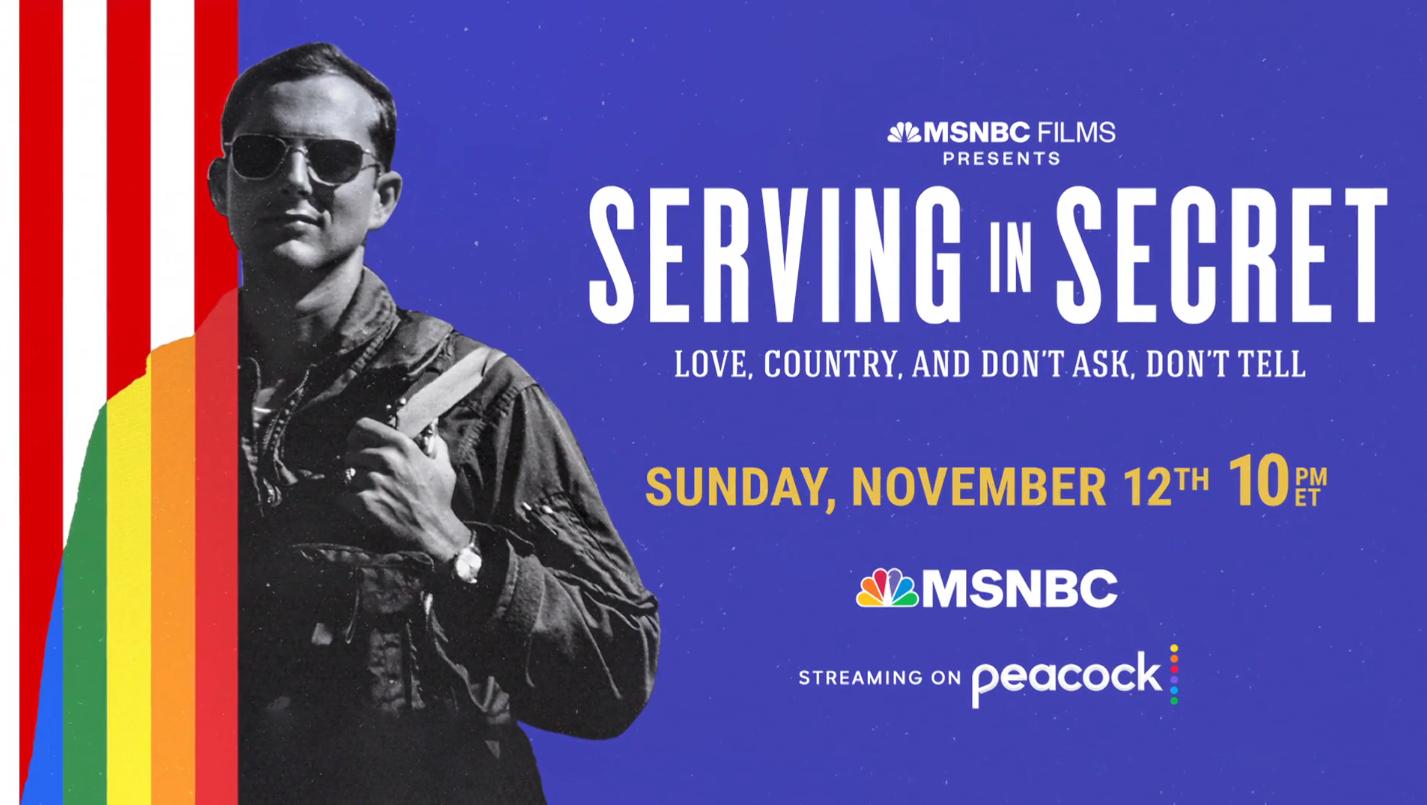
LOS ANGELES – On December 18, 2010, the U. S. Senate overturned the “Don’t Ask, Don’t Tell” policy by a 65-31 vote, which President Barack Obama signed a few days later.
As LGBTQ veterans mark Veterans’ Day 2023 today, the Los Angeles Blade takes a look back at a series of policies that marginalized and persecuted the LGBTQ community’s military service, and the activists who successfully pushed the government to repeal them.
Don’t Ask – Don’t Tell Repeal Act of 2010
During World War II, the U.S. Armed Forces established a policy that discharged homosexuals regardless of their behavior. In 1981, the Defense Department prohibited gay and lesbian military members from serving in its ranks with a policy that stated, “Homosexuality is incompatible with military service.” In the decade following, 17,000 service members were discharged from their duties for being homosexual.
This spurred a new policy called “Don’t Ask, Don’t Tell” during the Clinton Administration. In November 1993, the Defense Authorization Act put “Don’t Ask, Don’t Tell” into effect, allowing gay and lesbian citizens to serve in the military as long as they did not make their sexual orientation public. Commanders were prohibited from inquiring about a service member’s orientation provided that they adhered to this condition. Additionally, the policy forbid military personal from discriminating against or harassing closeted homosexual service members and applicants.
By 2008, more than 12,000 officers had been discharged from the military for publicizing their homosexuality. On December 18, 2010, the Senate overturned the “Don’t Ask, Don’t Tell” policy by a 65-31 vote, which President Barack Obama signed a few days later. The repeal allows gay and lesbian military members to serve openly in the armed forces.
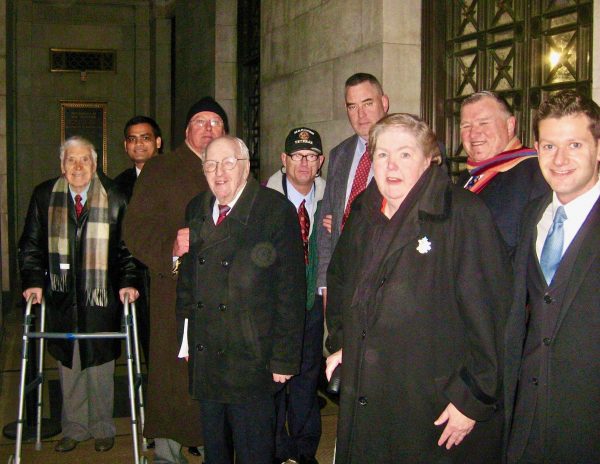
Left: (using walker) Dr. John Cook from Richmond VA and his assistant; SLDN Board Chair Tom Carpenter; Mattachine Society of Washington DC founder Frank Kameny; retired Marine Sgt. Tom Swann; unidentified tall guy: Pat Kutteles, mother of murdered infantry soldier Barry Winchell; politico David Mixner; and SLDN attorney Aaron Tax.
(Photo courtesy Tom Carpenter)
On the anniversary of the Don’t Ask, Don’t Tell Repeal in 2018, former SLDN Board Chair Tom Carpenter wrote a reflection for the Los Angeles Blade:
“Many in our community never understood why any LGBT citizen would ever want to become part of a military that proclaimed “Homosexuality is incompatible with military service,” often sending LGBT service members to prison because of who they loved. The hard-core anti-war/military crowd wanted no part in the fight to lift the ban on open service. Bowing to these objections, many large LGBT organizations paid nothing more than lip service to this effort.
As a candidate, Bill Clinton promised to lift the ban. Clinton had no idea the forces that opposed this change in policy. Those of us, who had served, knew better. The military and Senate leadership blocked him, including members of his own party. Instead of a policy, in 1993, we ended up with a federal law—“Don’t Ask, Don’t Tell.” (DADT). This law proved almost as bad for LGBT service members as the outright ban.
Shortly after the law went into effect, two young lawyers, former Army Captain Michelle Beneke and Dixon Osburn, established Servicemembers Legal Defense Network (SLDN). They realized other LGBT organizations had neither the desire, nor expertise, to take on the task of providing legal assistance to those who would likely run afoul of the law. Their ultimate goal was to repeal the law in its entirety, allowing for open and honest service.
I joined the board of SLDN in 1994 and served as its co-chair for 7 years. It was clear to us that it would be another 10-20 years before Congress would be willing to take up this hot-button issue again. During the administrations of George W. Bush from 2000-2008, we felt as if we were in the wilderness. Thousands of service members were being discharged as the military asked, and some LGBT service members told. SLDN provided legal assistance to many and saved numerous careers.
Our arguments of how unfair the law was, and how much it was costing taxpayers to train replacements for highly skilled service members who were discharged, gained little traction. Sadly, it was the brutal murders of a sailor, Allan Schindler, and a soldier, Barry Winchell that finally focused attention on why this law was counterproductive to military readiness, unit morale and discipline. Both these young men were brutally beaten to death because one of their fellow service members merely thought they were gay.
These two tragedies captured the attention of the country. At SLDN, we recognized it was personal stories that would humanize this fight for equality. The mother of Schindler, as well as the parents of Winchell actively participated in SLDN’s lobbying efforts on Capitol Hill. Their emotional appeal to members of Congress was powerful. But it was not enough.
Our strategy was to have veterans in the forefront of the lobbying and media effort. Especially effective were those who had been discharged, resigned their commissions, or did not reenlist because of their sexual orientation. The most compelling personal stories came from Arabic linguists, medics, pilots, and infantrymen who had been on the front lines in the Global War Against Terror. Many of these veterans appeared on television and had their stories reported by the press. Through these efforts, it was becoming ever more clear to the public, the law was not working. These veterans made the case by revealing the simple truth—the law was contrary to the core values of the services. It required them to live a lie.
It was not until Barack Obama was elected in 2008 that we started to see an end game. With a Democrat in the White House and a more friendly Congress, we continued our strategy of telling personal stories. By this time over 12,000 patriots had lost their careers. There was much foot dragging from the White House during the early part of President Obama’s first term. The memory of what had happened to President Clinton’s effort, sixteen years earlier, clearly impacted the willingness to spend political capitol on this issue.
By 2010, SLDN marshaled Congressional allies and helped draft a bill to repeal DADT. It was becoming clear SLDN”s media and lobbying efforts had changed public opinion. Most Americans now favored repeal of DADT. Further, the Pentagon was being threatened by a series of lawsuits that challenged the law. The turning point was when the Senate held hearings and Secretary of Defense Robert Gates testified he favored repeal. In contrast to 1993, the Joint Chiefs of Staff agreed.
In the lame duck session of the 111th Congress, notorious for inaction, a true miracle occurred. In a stroke of legislative brilliance, led by Army veteran, Congressman Patrick Murphy, DADT was repealed. On Dec. 22, 2010, President Obama signed the repeal law.
With the repeal of DADT, the first leg of institutional bias had collapsed. As predicted, in 2015, after a tremendous effort by LGBT groups, the Supreme Court ruled all Americans, regardless of sexual orientation, had a fundamental right to marry.
The only institution remaining in the way of equality is ministry. “Religious liberty” is now the rallying cry of the opponents of freedom for all Americans. While progress is being made, many battles still lie ahead. Never give up!”
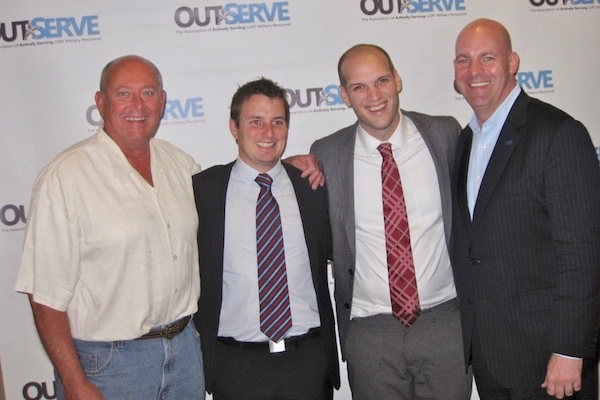
(Photo by Karen Ocamb)
On Sunday, Nov. 12 at 10 p.m. ET on MSNBC, and streaming on Peacock, ‘Serving in Secret: Love, Country, and Don’t Ask Don’t Tell’ will air:
In 1970, Tom Carpenter graduated from the Naval Academy ready to follow his family’s lineage in the military as a US Marine Corps attack pilot. Then he met Courtland Hirschi. Tom and Court fell deeply in love, keeping their illicit relationship a secret. At that time, homosexuality – if discovered – resulted in being kicked out of the military with a dishonorable discharge, a court martial, jail time, or worse… Tom and Court’s story would be no exception. ‘Serving in Secret’ features leading voices in politics, historians, civil rights activists, and retired military personnel telling the story of LGBTQ discrimination in the military, and the controversial compromise known as “Don’t Ask, Don’t Tell.” Tom’s work towards its repeal along with many others was the Turning Point for LGBTQ+ rights, a fight that continues today.
‘Serving in Secret: Love, Country, and Don’t Ask Don’t Tell’ (Link)
History
Hate: The bombing of the 16th Street Baptist Church remembered
Sixty years after four little girls were killed in the bombing at the 16th Street Baptist Church, at 10:22 a.m., the church rang its bells
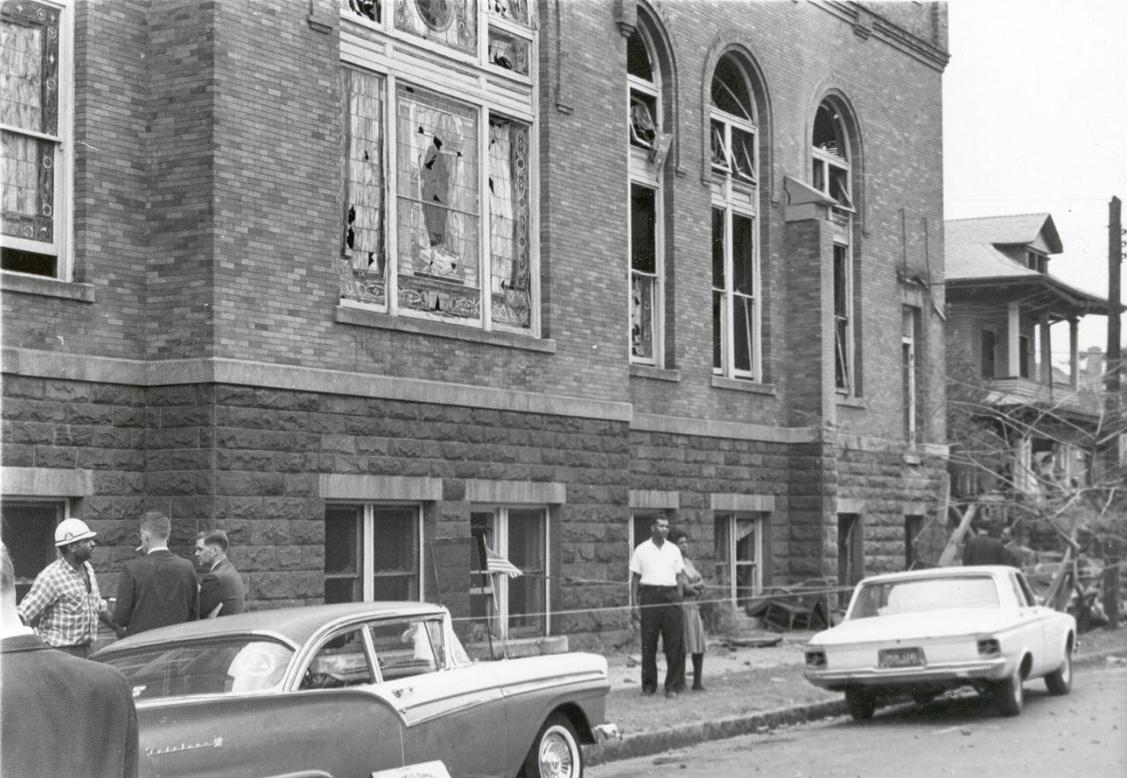
BIRMINGHAM, Ala. — It was a quiet Sunday morning in Birmingham—around 10:24 on September 15, 1963—when a bomb made from dynamite exploded in the back stairwell of the downtown Sixteenth Street Baptist Church. Minutes before a white man was seen placing a box under the steps of the church.
The blast killed Addie Mae Collins, 14; Carole Robertson, 14; Cynthia Wesley, 14; and Denise McNair, 11 injuring 20 more and left the sister of Addie Mae Collins, 12-year-old Sarah Collins Rudolph, suffering from not only the loss of her sister, but her eyesight as well.
The Federal Bureau of Investigation notes in the agency’s history of the event that the bombing was a clear act of racial hatred: the church was a key civil rights meeting place and had been a frequent target of bomb threats.
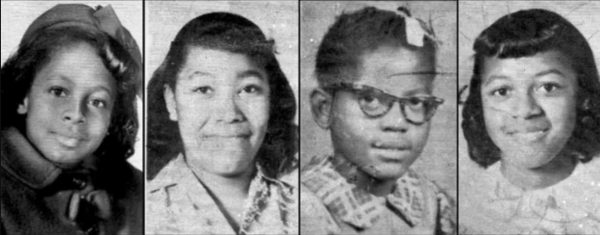
(Photo Credit: Photographic collections of the Library of Congress)
Addressing the American people on Monday, September 16, 1963, President John F. Kennedy said:
“I know I speak on behalf of all Americans in expressing a deep sense of outrage and grief over the killing of the children yesterday in Birmingham, Alabama. It is regrettable that public disparagement of law and order has encouraged violence which has fallen on the innocent. If these cruel and tragic events can only awaken that city and State–if they can only awaken this entire Nation–to a realization of the folly of racial injustice and hatred and violence, then it is not too late for all concerned to unite in steps toward peaceful progress before more lives are lost.
The Negro leaders of Birmingham who are counseling restraint instead of violence are bravely serving their ideals in their most difficult task–for the principles of peaceful self-control are least appealing when most needed.
Assistant Attorney General Burke Marshall has returned to Birmingham to be of assistance to community leaders and law enforcement officials–and bomb specialists of the Federal Bureau of Investigation are there to lend every assistance in the detection of those responsible for yesterday’s crime. This Nation is committed to a course of domestic justice and tranquility–and I call upon every citizen, white and Negro, North and South, to put passions and prejudices aside and to join in this effort.”
The FBI’s account of the aftermath and investigation
At 10:00 p.m. that night, Assistant Director Al Rosen assured Assistant Attorney General Katzenbach that “the Bureau considered this a most heinous offense…[and]…we had entered the investigation with no holds barred.”
And we backed that promise up. Dozens of FBI agents worked the case throughout September and October and into the new year—as many as 36 at one point. One internal memo noted that:
“…we have practically torn Birmingham apart and have interviewed thousands of persons. We have seriously disrupted Klan activities by our pressure and interviews so that these organizations have lost members and support. …We have made extensive use of the polygraph, surveillances, microphone surveillances and technical surveillances…”
By 1965, we had serious suspects—namely, Robert E. Chambliss, Bobby Frank Cherry, Herman Frank Cash, and Thomas E. Blanton, Jr., all KKK members—but witnesses were reluctant to talk and physical evidence was lacking. Also, at that time, information from our surveillances was not admissible in court. As a result, no federal charges were filed in the ‘60s.
It has been claimed that Director Hoover held back evidence from prosecutors in the ‘60s or even tried to block prosecution. But it’s simply not true. His concern was to prevent leaks, not to stifle justice. In one memo concerning a Justice Department prosecutor seeking information, he wrote, “Haven’t these reports already been furnished to the Dept.?” In 1966, Hoover overruled his staff and made transcripts of wiretaps available to Justice. And he couldn’t have blocked the prosecution and didn’t—he simply didn’t think the evidence was there to convict.
For its part, the FBI noted that in the end, justice was served.
Chambliss received life in prison in 1977 following a case led by Alabama Attorney General Robert Baxley. And eventually the fear, prejudice, and reticence that kept witnesses from coming forward began to subside. We re-opened our case in the mid-1990s, and Blanton and Cherry were indicted in May 2000. Both were convicted at trial and sentenced to life in prison. The fourth man, Herman Frank Cash, had died in 1994.
Marking the 16th Street Baptist Church bombing, 60 years later
Birmingham NBC News affiliate WVTM-TV 13 reported that the 16th Street Baptist Church rang its bells in honor of bombing victims 60 years later at 10:22 a.m. and read the victims’ names out loud in remembrance.
U.S. Supreme Court Associate Justice Ketanji Brown Jackson was the keynote speaker Friday during the commemoration service at 16th Street Baptist Church 60 years after the bombing that killed four girls.
In her remarks, Jackson, the first Black woman to serve on the U.S. Supreme Court, standing at the pulpit in the historic church told those gathered for the commemoration services,
“Today we remember the toll that was paid to secure the blessings of liberty for African Americans and we grieve those four children who were senselessly taken from this earth and their families robbed of their potential,” Jackson said.
”The work of our time is maintaining that hard-won freedom and to that we are going to need the truth, the whole truth about our past,” the Justice said noting that while the American nation should celebrate the advancements that have been made since 1963, there is still work to do.
Jackson said she knows that atrocities “like the one we are memorializing today are difficult to remember and relive” but said it is also “dangerous to forget them.”
“If we are going to continue to move forward as a nation, we cannot allow concerns about discomfort to displace knowledge, truth or history. It is certainly the case that parts of this country’s story can be hard to think about,” she said adding, “Yes, our past is filled with too much violence, too much hatred, too much prejudice, but can we really say that we are not confronting those same evils now? We have to own even the darkest parts of our past, understand them and vow never to repeat them.”
Related:
Birmingham church bombing survivor speaks out 60 years later:
History
‘Fagots Stay Out:’ Protest at Barney’s Beanery 53 years ago today
Rocco interviews Morris Kight, founder of the California chapter of the Gay Liberation Front and a young Rev. Troy Perry
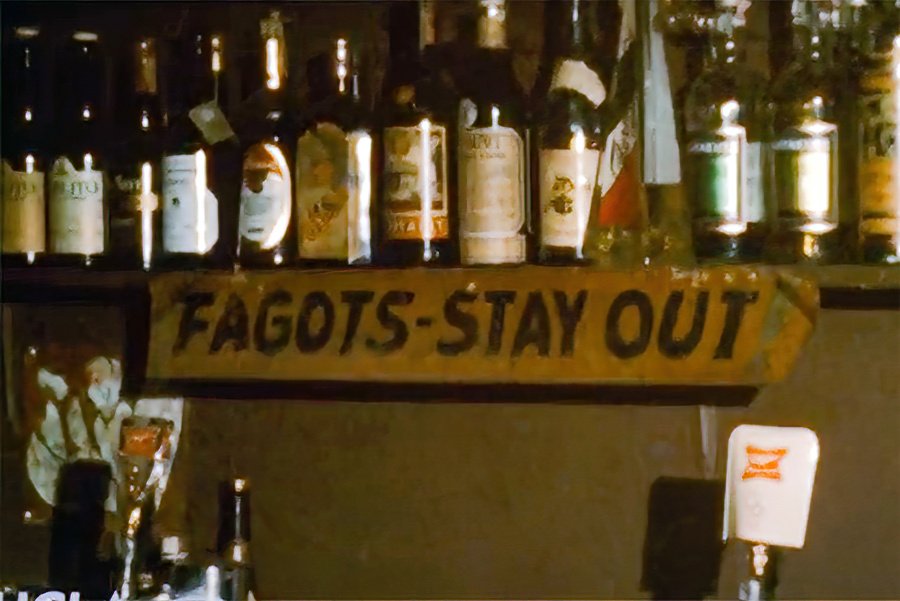

By Paulo Murillo | WEST HOLLYWOOD – The Academy Awards Museum recently featured three short films by trailblazing Los Angeles-based filmmaker and gay rights advocate Pat Rocco (1934–2018) last week, courtesy of Outfest UCLA Legacy Project at the UCLA Film & Television Archive.
Films featured were “Sign of Protest” (1970), “Meat Market Arrest” (1970), and “We Were There” (1976).
The short film “Sign of Protest” documents a February 7, 1970, gay liberation march outside Barney’s Beanery in West Hollywood, protesting a famous sign that read “Fagots [sic]–stay out” which hung proudly over the bar.
Rocco plays the role of neutral reporter on the scene in this activist interpretation of a newsfilm, interviewing the bar’s owners and patrons, as well as the protestors, and allowing their comments to speak for themselves.
Rocco is shown speaking with the daughter of the bar’s owner, who states nonchalantly that the sign has been up since 1959 and was originally accompanied by many more (since removed). She further states that the sign is part of the restaurant’s history and will not come down unless Barney’s is legally mandated to remove it.
Rocco then goes over to the sign posted above the bar and interviews customers about their opinion of it, which is largely positive.
Next, Rocco joins the 50 protesters outside and interviews Morris Kight, founder of the California chapter of the Gay Liberation Front, the organization that spearheaded the picket and a young Rev. Troy Perry, founder of the gay-affirming Metropolitan Community Church, who reiterates many of the comments heard from other protesters that the sign is offensive and should be taken down as a civil rights violation.
He also mentions a June 26, 1964, LIFE Magazine article about Barney’s Beanery and the controversial sign where the owner says homosexuals should be shot.
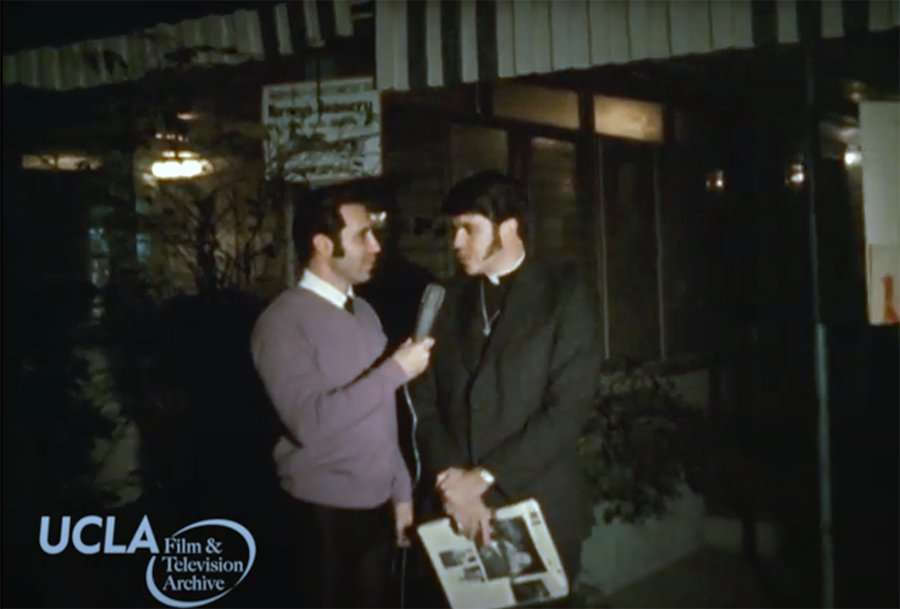
For those who missed on the big screen or wish to revisit it, the short film is available on YouTube, however, view at your discretion due to language some may find offensive.
Trailblazing Los Angeles-based filmmaker and gay rights advocate Pat Rocco (1934–2018) began his moviemaking efforts as a creator of queer male erotica in the late 1960s. When the public’s appetite shifted to hardcore, Rocco pivoted to documenting moments of LGBTQ protest and collective joy in his adopted city, often appearing on camera as an always gracious (and meticulously coiffed) interviewer of his many subjects.
Whether out in the streets capturing a demonstration of Barney’s Beanery in West Hollywood against their defamatory anti-gay signage (Signs of Protest), on the scene of an escalating situation with law enforcement at a gay bar (Meat Market Arrest), or capturing LA’s energetic early Pride parades (We Were There), Rocco’s films always culminate in moments of hope and a spirit of liberation that feel akin to Varda’s own joyful yet always inquisitive Weltanschauung.
**************************************************************************************
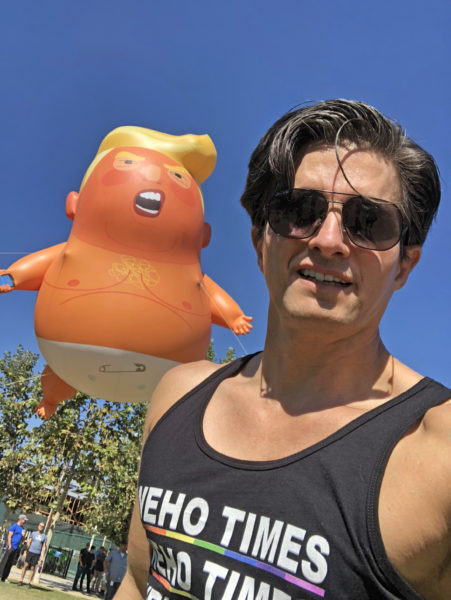
Paulo Murillo is Editor in Chief and Publisher of WEHO TIMES. He brings over 20 years of experience as a columnist, reporter, and photo journalist.
******************************
The preceding article was previously published by WeHo Times and is republished with permission.
History
Marking slavery’s end, a historic event now marks a Federal holiday
“The people of Texas are informed that, in accordance with a proclamation from the Executive of the United States, all slaves are free”
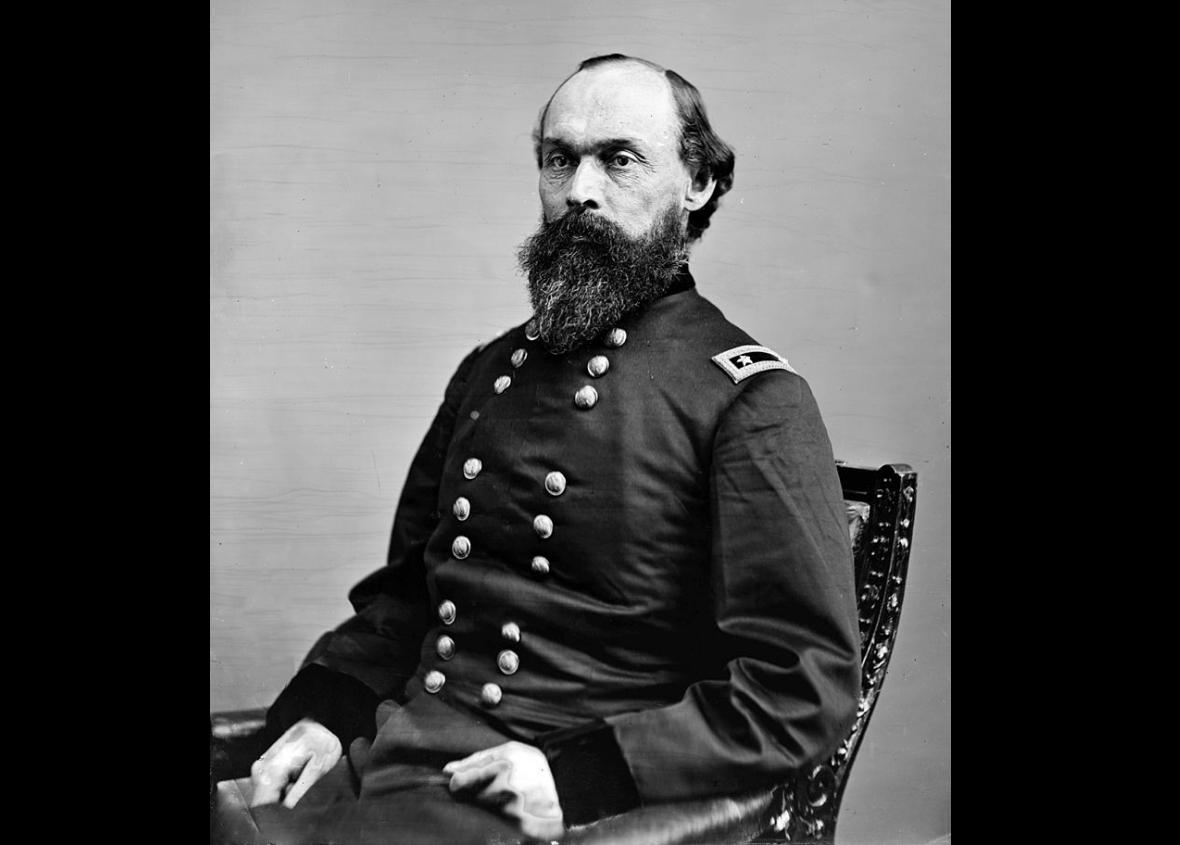
GALVESTON, Tx. – In the early summer of 1865, on a clear crisp June morning, the lead elements of the Federal Army of blue-coated soldiers of the 13th Army Corps occupied the island city of Galveston, Texas on Monday the 19th.
Led by Union Army Major General Gordon Granger, who had recently taken command of the Department of Texas, the 13th Corps was tasked with enforcement of the emancipation of slaves in the former Confederate state.
The bloody civil war had ended officially with the surrender of the Army of Northern Virginia commanded by Robert E. Lee to Commander of Union forces, Lieutenant General Ulysses S. Grant, at Appomattox Courthouse, Virginia on April 9, 1865.
The warfare between the last elements of the Confederate and Union troops however, dragged on for another month or so culminating in the Battle of Palmito Ranch, which was fought on May 12 and 13, 1865. The fighting occurred on the banks of the Rio Grande east of Brownsville, Texas on the Texas-Mexico border some 400 miles Southwest of Galveston.
It took approximately another two weeks for Confederate Lieutenant General Simon B. Buckner to surrender his command of the Trans-Mississippi Department (which included Texas) to Union Major General Peter J. Osterhaus on May 26, 1865.
General Granger was then tasked with implementing the order to free enslaved African Americans.
Once Granger’s Federals had taken control of the port city, he and his command staff headed to Union Army Headquarters located at the Osterman Building, once located Strand Street and 22nd Street.
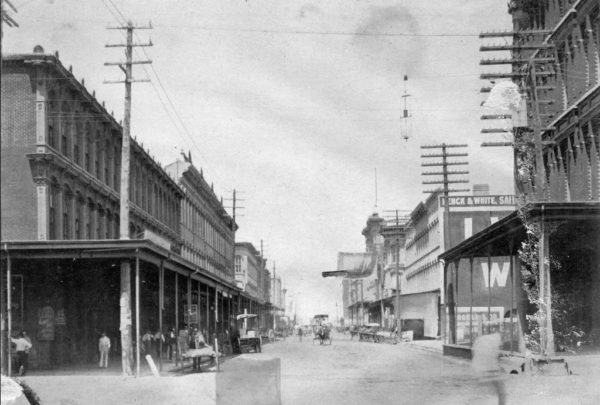
It was there that General Order No. 3 was first publicly read out loud to a gathering of now newly freed Black Americans and other citizens of the city.
“The people of Texas are informed that, in accordance with a proclamation from the Executive of the United States, all slaves are free. This involves an absolute equality of personal rights and rights of property between former masters and slaves, and the connection heretofore existing between them becomes that between employer and hired labor. The freedmen are advised to remain quietly at their present homes and work for wages. They are informed that they will not be allowed to collect at military posts and that they will not be supported in idleness either there or elsewhere.”
Sadly it would take nearly two years before all of the enslaved African Americans would actually be freed in Texas by white plantation owners and others who simply didn’t tell them or defied Federal authorities.
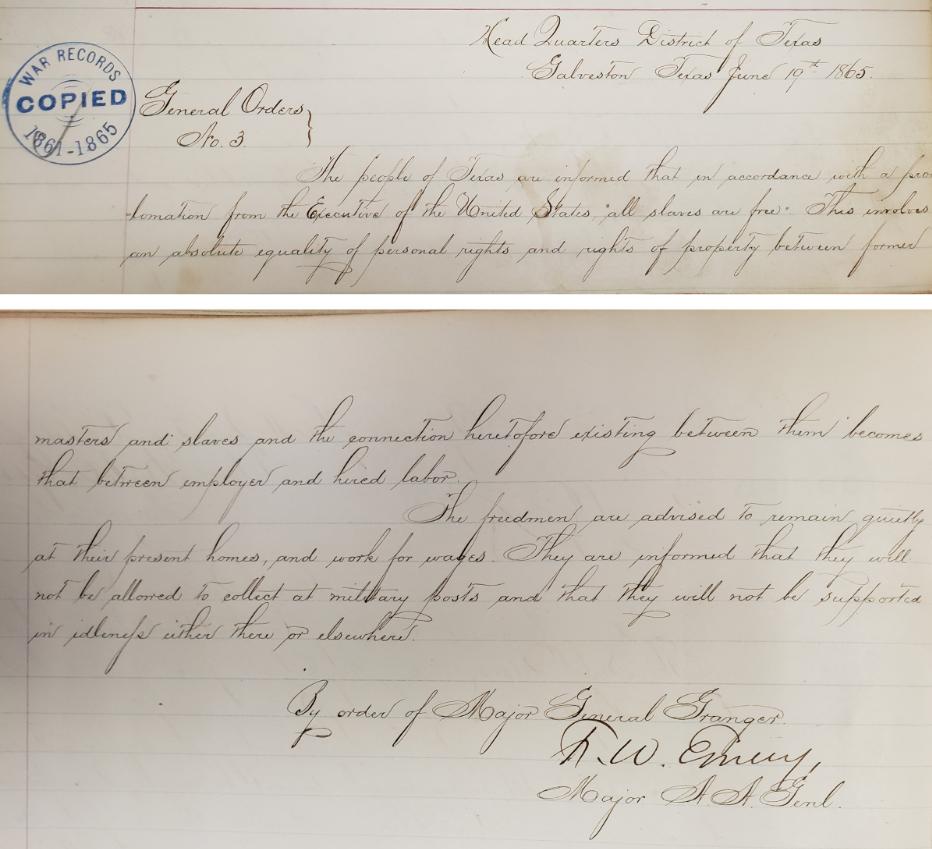
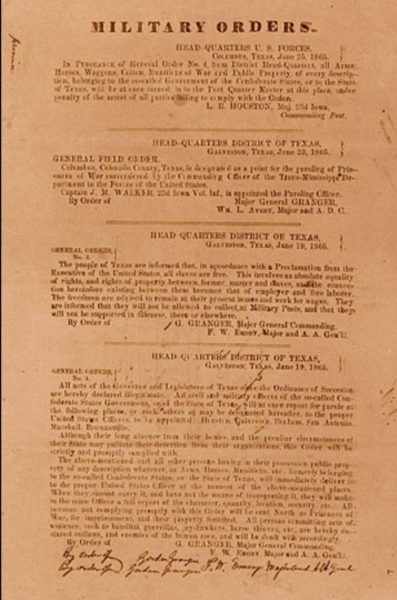
In 2014, the Texas Historical Commission placed a subject marker at the corner of 22nd and Strand, near the location of the Osterman Building, where General Granger and his men first read General Orders, No. 3.
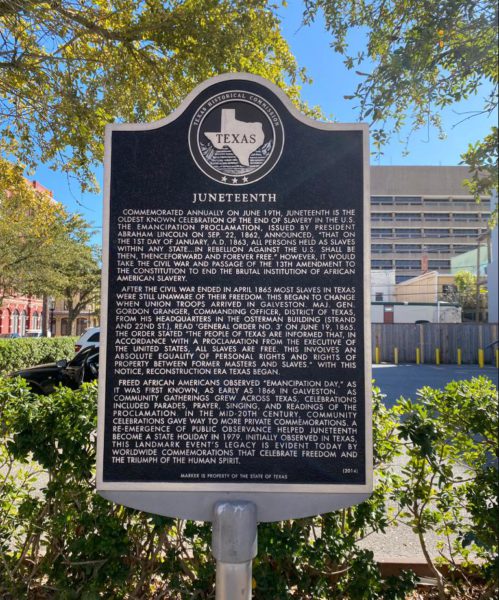
While many Black Americans across the former Confederate States would celebrate their freedom granted by The Emancipation Proclamation, issued by President Abraham Lincoln on Sep. 22, 1862 during the height of the war, in annual celebrations still others yet would annually mark the date of passage of the 13th Amendment to the U.S. Constitution by Congress on January 31, 1865, which abolished slavery in the United States.
Yet on Galveston Island, the tradition of marking their first learning of The Emancipation Proclamation, issued by President Lincoln with General Granger’s General Orders, No. 3, was the benchmark for ongoing annual celebrations and as the years went by as the Black Americans from the Lone Star state migrated ever Northward, it would be that seminal moment that ultimately would lead to the creation of a federal holiday and recognition some 156 years later.
One observer also wryly pointed out that the June anniversary was seasonally tied to better weather than the other two dates and more conducive to celebrations and large gatherings, hence its popularity in being established as the federal holiday.
Information and photographs provided by the National Archives, the City Of Galveston, Galveston Historical Foundation, the Library of Congress, and State of Texas, Texas Historical Commission.
History
50 years ago Atlanta’s nascent gay rights movement marched
“It was mostly about feeling good,” said Phil Lambert. “That we’re not a bunch of sick people. That we’re not the problem.”
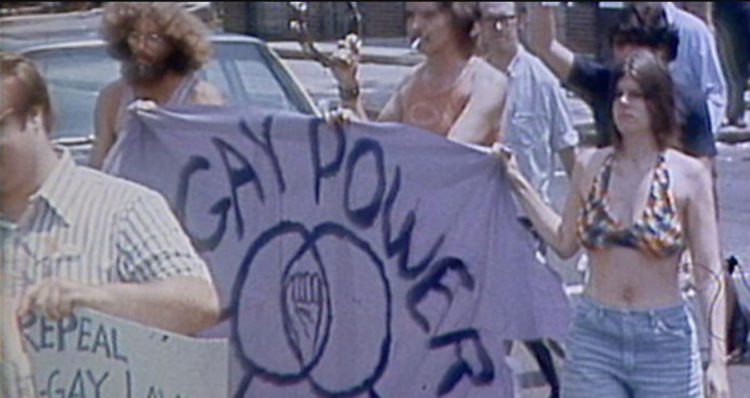
ATLANTA, Ga. – This Sunday, exactly fifty years ago to the day on a bright Sunday morning, about a hundred brave gay and lesbian Atlantans from the Georgia Gay Liberation Front, unfurled a lavender colored banner made from a bedsheet with the intertwined symbols representing male + male, female + female with the a raised fist of defiance and the words ‘Gay Power’ emblazoned on it and they marched.
The group inched its way up Peachtree Street to a soundtrack of chants, kazoos and a tambourine.
Mindful that stepping off the sidewalks could get them arrested — the city of Atlanta had turned down their request for a permit and the police were closely watching for jay-walkers — the marchers stopped at every corner until they were given the crossing signal, the Atlanta Journal-Constitution reported.
Prior to the coronavirus pandemic, the average estimated crowds in attendance at Atlanta Pride is upwards of 300,000 plus. But at the time the Journal-Constitution noted, even in the city that had just birthed the civil rights movement and was home to Dr. Martin Luther King Jr., LGBTQ rights was considered a radical issue that the Georgian liberal political establishment, including many Atlanta progressives, wanted to stay away from. At that time, gay sex was still illegal under state law, and the American Psychiatric Association characterized homosexuality as a mental illness.
For those GAGLF Atlantans who participated in that first pride march on June 27, 1971, the event was a turning point, a moment when, for the first time, they could publicly celebrate a part of themselves that society had long demanded they keep hidden.
“It was mostly about feeling good,” said Phil Lambert, a Vietnam veteran who was in attendance. “That we’re not a bunch of sick people. That we’re not the problem.”
Read the entire fascinating story: 50 years ago, Atlanta’s gay rights push took to street for first time
History
LGBTQ rainbow flag was born in San Francisco, but its history is disputed
On that day in June 1978, it felt as if the rainbow had always been a symbol for the LGBTQ community, it just hadn’t revealed itself yet
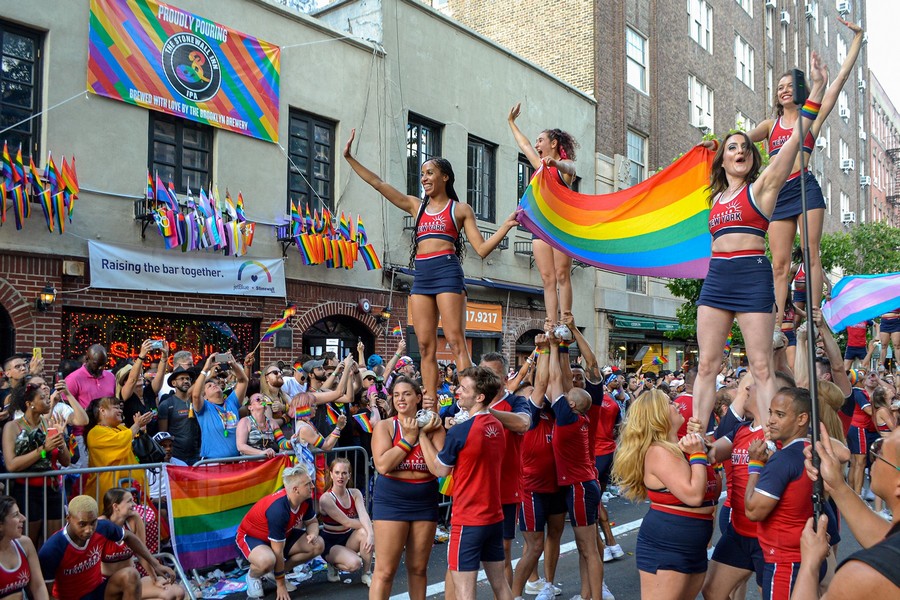
By August Bernadicou (with additional text and research by Chris Coats) | NEW YORK – Many enduring symbols that establish an instant understanding and define a diverse community are intrinsically linked with controversy, confusion, and ill-informed backstories dictated by vested interests and those who told the story loudest. The LGBTQ rainbow flag is no different.
While it was the work of many, the people who deserve credit the most have been minimized if not erased. Gilbert Baker, the self-titled “Creator,” screamed the story and now has a powerful estate behind his legacy. Before his death in 2017, Baker established himself as the complete authority on the LGBTQ rainbow flag. It was his story which he lived and became.
While there are disputed accounts on the flag’s origins, one thing that is not disputed is that the LGBTQ rainbow flag was born in San Francisco and made for the Gay Freedom Day Parade on June 25, 1978.
For all of human history, rainbows have mystified and inspired. A greeting of light and serenity after the darkness and chaos of a storm. They have symbolized hope, peace, and the mysteries of existence. For a moment, we can see the invisible structure, the “body” of light, made visible. A secret revealed, then hidden again.
Though it may seem like a modern phenomenon, rainbow flags have waved throughout history. Their origin can be traced to at least the 15th Century. The German theologian, Thomas Müntzer, used a rainbow flag for his reformist preachings. In the 18th Century, the English-American revolutionary and author, Thomas Paine, advocated adopting the rainbow flag as a universal symbol for identifying neutral ships at sea.
Rainbow flags were flown by Buddhists in Sri Lanka in the late 19th Century as a unifying emblem of their faith. They also represent the Peruvian city of Cusco, are flown by Indians on January 31st to commemorate the passing of the spiritual leader Meher Baba, and since 1961, have represented members of international peace movements.
Now, the rainbow flag has become the symbol for the LGBTQ community, a community of different colors, backgrounds, and orientations united together, bringing light and joy to the world. A forever symbol of where they started, where they have come, and where they need to go. When many LGBTQ people see a rainbow flag flowing in the wind, they know they are safe and free.
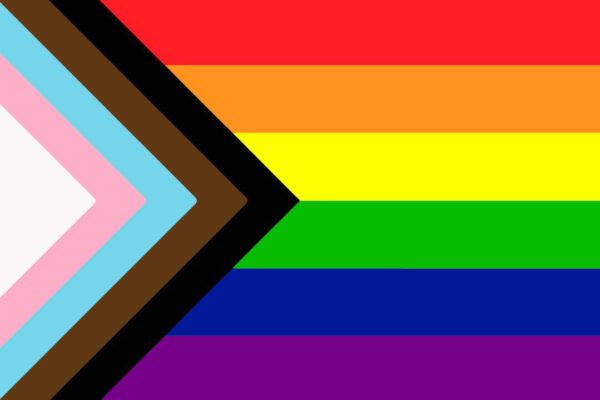
While the upper class and tech interests rule the city now, in the 1960s and 70s, San Francisco was a wonderland for low and no-income artists. The counterculture’s mecca. By the mid-1970s, the Haight-Ashbury neighborhood that had once been a psychedelic playground of hippie art, culture, and music had fallen into disarray. Hard, dangerous drugs like heroin had replaced mind-expanding psychedelics. Young queers and artists needed a new home, and they found it in the Castro.
Lee Mentley (1948-2020) arrived in San Francisco in 1972 and quickly fell in with the oddball artist and performers in the Castro neighborhood, donning flamboyant, gender-fucked clothes, performing avant-garde theater, and creating their own clubhouses. He was on the Pride Planning Committee in 1978 and ran the Top Floor Gallery on the top floor of 330 Grove, which served as an early Gay Center in San Francisco.
Lynn Segerblom (Faerie Argyle Rainbow) was originally from the North Shore of Hawaii and moved to San Francisco where she attended art school at the Academy of Art. Her life changed when she found a new passion in tie-dye and rainbows in the early 1970s. Entrenched in the free-loving technicolor world of San Francisco, in 1976, Lynn legally changed her name to Faerie Argyle Rainbow. She joined the Angels of Light, a “free” performance art troupe where the members had to return to an alternative, hippie lifestyle and deny credit for their work.
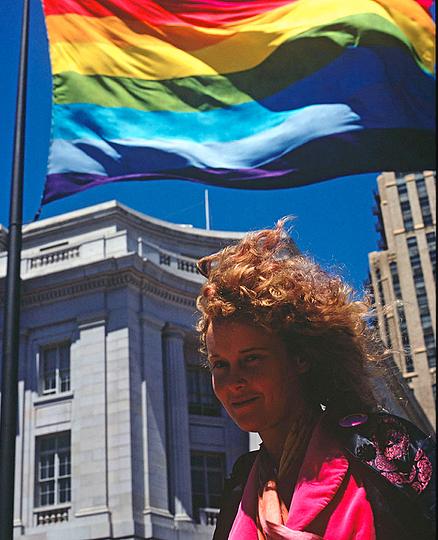
Shortly after the original rainbow flags were flown for the last time, both Lynn and Lee moved out of San Francisco. Lee moved to Hawaii and Lynn moved to Japan. When they returned, they were shocked to see how their contribution to history was becoming a universal symbol. They remain passionate about defending their legacies and giving a voice to the mute.
——–
LEE MENTLEY: “One day in 1978, Lynn came to 330 Grove with a couple of her friends, James McNamara and Robert Guttman, and said we should make rainbow flags for Gay Day to brighten up San Francisco City Hall and Civic Center because it’s all gray and cold in June. We thought that it sounded like a great idea.”
To get over the first hurdle, money, the young artists went to Harvey Milk, the first openly gay elected official in the history of San Francisco, California, for help.
LEE: “There was no actual funding for it. We contacted Harvey Milk and another supervisor, and they asked the city if we could get a little funding. They found some leftover funds from the previous year’s hotel tax, and we got $1,000.”
LYNN SEGERBLOM: “I remember having a meeting where I presented the idea of making rainbow flags. I had some sketches. At that meeting, there was just a handful of us there, and I remember, and even my friend assured me, that Gilbert Baker was not at that meeting. I don’t know where he was, I didn’t keep track of him, but he was not at the meeting where I suggested rainbow flags. We decided, yes, rainbow flags sounded great.”
The committee approved the rainbow imagery and made the decision to make two massive 40’ x 60’ foot rainbow flags to be flown at the Civic Center along with 18 smaller rainbow flags designed by different, local artists, to line the reflecting pool putting rainbows into the grey sky.
For the two large flags, one would be an eight-color rainbow starting with pink and including turquoise and indigo in place of blue, and the other a re-envisioning of the American flag with rainbow stripes which became known as Faerie’s flag.
——
Gilbert Baker’s name on his memoir, Rainbow Warrior, it says “CREATOR OF THE RAINBOW FLAG,” leaving little debate that Gilbert claimed full ownership for the concept and design of the legendary symbol. He never denied Lynn or James MacNamara’s involvement in the flags’ construction and speaks briefly and fondly of them and their talents in that same book.
LEE: “We didn’t need one person saving our ass, and it certainly wouldn’t have been Gilbert Baker. He was no Betsy Ross. He was a very good promoter, and I give him all the credit in the world for making the rainbow flag go international. He did a great service, and he was a very talented, creative man, but he could never have done all of the work by himself; no one could have.
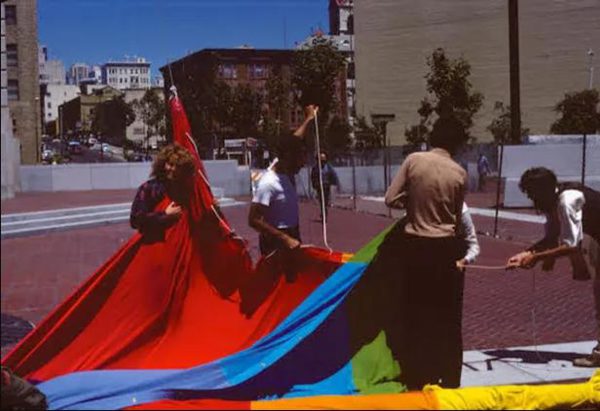
We never considered ownership. There was never this big ownership debate until Gilbert started it. Because AIDS hit us so fast after this, most of our leadership either went into HIV activism or died.”
LYNN: “The story is that a white gay man did all of this by himself, but, in fact, that is not true at all. He just promoted it. For that, though, he should be given great love.”
————
Making the two original rainbow flags was no easy feat. With a limited budget and limited resources, the group had to improvise and figure it out as they went along. While Lynn had dabbled in flags before, a project of this scope and importance was far beyond her comfort zone.
LEE: “The community donated the sewing machines we used. We asked people at the Center if anyone would like to volunteer. All sorts of people from all over the country helped us with the flags, over 100 people, which, to me, is an amazing story. That’s where it came from. It came from regular artists who wanted to have fun and make something pretty for gay people.”
LYNN: “The Rainbows Flags were hand-dyed cotton and eight colors. I made two different types. The one with just the stripes and then the American flag one, which I designed myself. There was a group of us that made them, James McNamara, Gilbert Baker, and myself. Originally they were my designs. I was a dyer by trade, and I had a dying studio at the Gay Community Center at 330 Grove Street.”
LEE: “People would come and help as long as they could. Then, somebody else would come and help as long as they could. We opened up the second floor of 330 Grove to people who came to be in the Parade and march. People came in and made posters, banners and did art stuff.”
LYNN: “We made the flags on the roof because there was a drain up there. There was a wooden ladder that led up to the roof. The hot water had to be carried up to the roof because we didn’t have hot water up there. We heated it up on the stove in pots. We put the hot water in trash cans on the roof.”
LEE: “We had trash cans and two by fours, and we had to keep agitating the fabrics in the dye. Since they were in hot water, they had to be poked and agitated for hours.”
LYNN: “We had to constantly move the fabric in the dye, so the dye penetrated the fibers that weren’t clamped tight. We had to make sure there would be blue, and it wouldn’t just be white on white or white with a very murky, pale blue.
After they were washed and dyed, they went through the washer and dryer. Then, we ironed them. If the fabric stays out too long, once you take it out of the water, if it sits on itself even for just a few minutes, it starts to make shapes.”
—-
LEE: “Lynn’s flag, the new American flag, was a similar rainbow, but it had stars in the corner. I have photographs of that flag flying at gay events in San Francisco at City Hall and Oakland.”
LYNN: “I always liked the American flag. I thought, oh, wouldn’t that be nice? I knew with some luck I could make it.”

LEE: “I thought the one with the stars was more interesting because it symbolized a new flag for the United States.”
LYNN: “For my American flag, I decided to flip the order of the colors, so pink was at the bottom and purple was at the top in an eight-color spectrum. That was intentional. I wanted them to be different.
I made the stars with wood blocks and clamps. I got the white fabric and washed it, and folded it a different way. When I was making it, it looked like a big sandwich. The bread would be the woodblocks, and the fabric was in between. We immersed the whole flag in dye and swished it around. I wasn’t sure if it would come out right because it was the first time I did that fold. I was lucky. It worked.
I sewed lamé stars into one stripe with leftover stars from my Angels of Light costumes. On one side of the blue stripe, there was a star with silver lamé, and on the other side, there was a star with gold lamé.
I got all these ideas because I worked with these mediums on a daily basis: paint, dye, fabric, and glitter.”
—
LEE: “We worked for weeks dying fabric, shrinking fabric, and sewing fabric.”
LYNN: “We worked on them for seven weeks. I was worried that we weren’t going to finish on time. We worked hard and long hours. Towards the end, we decided we didn’t have time to go to the laundromat, so we started rinsing them on the roof and wringing them dry. We also ran out of quarters. We draped them off of the Top Floor Gallery’s rafters, and they drip-dried. They looked great. They were beautiful.”
Until that day, the pink triangle, used by the Nazis to label homosexuals in their genocidal campaign, was the most commonly used symbol for the LGBTQ movement, a symbol in solidarity with our fallen ancestors. But the triangle came from a place of trauma, it was a reminder of the storm while the rainbow was the hope that came after. The promise of brighter days ahead.
On that day in June 1978, it felt as if the rainbow had always been a symbol for the LGBTQ community, it just hadn’t revealed itself yet.
LEE: “We went out, flew the flags, and blew everybody’s fucking minds. People were blown away. The flags were so beautiful. They were waving warriors. The biggest ones were 40’ by 60’ feet. The Parade marched through the flags to get to Civic Center. We instantly proclaimed that this was our symbol. It wasn’t planned. It was organic.”
LYNN: “It was just what I wanted: a touch of magic, a touch of glitter, and a little bit of Angels of Light.”
LEE: “We weren’t creating this huge symbol. We were decorating Civic Center. We weren’t thinking of marketing our entire futures. It was an art project.”
LYNN: “We looked at the rainbow flags as a work of art, and we wanted them to be beautiful and unique. After the Gay Parade, the flags were a big hit. People loved them. Everybody loved them.”
—-
In the pre-technology world, people and property could just disappear. There were no surveillance cameras. Lynn didn’t even have a phone.
Even though no one could have known the flag would become an eternal symbol for a worldwide community, it was clear even then that they were a piece of history to be coveted.
In his memoir, Baker hypothesizes that the Rainbow American flag was stolen shortly after it was hung up on the front of the Gay Community Center for Gay Freedom Day in 1979. He suggests it might have been a construction crew working on the new symphony across the street and in a homophobic act, stole the flag and buried it in cement.
LEE: “Later in 1979 or 1980, you can find it somewhere in the minutes for a Pride Foundation meeting, Gilbert came to us and asked to borrow the two large flags, and we agreed. We never saw them again.”
LYNN: “I went to work one day at 330 Grove, and Gilbert came in and said that the two 40’ by 60’ flags had been stolen.”
Images published in the San Francisco Chronicle, videos of the march, and other widely distributed photographs only add to the mystery. They show both the classic rainbow flag of eight stripes and the American revision flying at the Civic Center on June 24, 1979 and not at the Gay Community Center.
As for the original eight-stripe flag, there are even fewer answers. In his memoir, Baker says that while they were taking down the flags from Civic Center, he was hit on the head on knocked out. “When I came to on the muddy ground,” he says “I saw people all around me hitting each other and screaming obscenities. They were fighting over the rainbow flags, pulling on them like a game of tug-of-war, tearing them.”
LYNN: “It would have taken more than one person to carry the flags. It took three people to carry one folded-up flag for the Parade, and we needed a van. They weighed a lot, and 330 Grove did not have an elevator. Whoever stole them had help—one person could not do it on their own.”
—-
LYNN: “Before the rainbow flag missing, Gilbert came to one of my workshops. He wanted to watch me dying fabric all day and see how I did everything.
I was like, oh yeah, I’ll show you, come in.
I said, here, put some gloves on and do it with me.
He was like, oh, no, no, I don’t want to get my hands dirty.
He was only trying to figure out how I did the dying.”
—-
LEE: “Gilbert went to these places like MoMa and told them these outrageous stories about how he made the rainbow flag all by himself. He said this about the flag he donated. When you look at it, you can tell that it was bought at a craft fair. It flat out wasn’t one of our flags. It was polyester.”
LYNN: “It was polyester, it wasn’t the same size, and it wasn’t hand-dyed. My flags were different. The rainbow flag at MoMa was a beautiful flag inside a frame, but it wasn’t an original, not from 1978, not even a piece from 1978. I was hoping, oh, my God, maybe this is a piece of it.”
LEE: “It wasn’t even the original colors. MoMa said they were original flags, but they weren’t. It was a commercially produced rainbow flag with a primary color rainbow. The plaque cited Gilbert donating it as an original flag.”
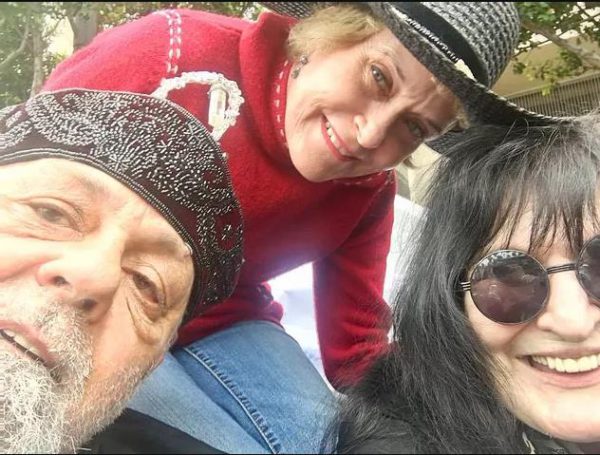
—-
LYNN: “I read online that Gilbert Baker said he named me “Faerie Argyle Rainbow,” a complete lie. Bethany the Princess of Argyle named me. I chose the name Rainbow because I was known as a rainbow artist.”
LEE: “Even Lynn’s driver’s license said her name was “Faerie Argyle Rainbow.””
LYNN: “In 1976, I filled out a form at the DMV, and my name became Faerie Argyle Rainbow. Back then, they didn’t ask you for a birth certificate. The employee just said, “This is your name now,” and gave me a driver’s license that said Faerie Argyle Rainbow.
It all sounds crazy now, but back then, it wasn’t.”
—–
LEE: “I had my arguments and fights with Gilbert Baker because he claims he came up with the rainbow flag. If you go through all of his different interviews, you see that his story changes over and over and over again. He even said Harvey Milk came to him and asked him to create a symbol for the movement. No—I read that, and no such thing happened.”
LYNN: “Just look at his interviews. His takes on what the colors in the rainbow flag mean are all in his head. The rainbow represents everyone, no matter what gender or race you are; that’s how I looked at it. Rainbows are in nature and beautiful. People love them, and I love them. I knew they would be great color healing.
Gilbert assigning meaning to each color is ridiculous. I think anyone could make up what each color means. If I wanted to, I could do the same. It wasn’t what I was thinking. I was thinking that rainbows encompass everybody, the whole group, unity.”
LEE: “I have tried to convince people that the rainbow flags were made with tax-payer dollars. We made them as a non-profit.
Not even Gilbert owns them. I have always thought that anyone who sells anything rainbow should give a portion of the profits to homeless gay youth. We need to take care of our own kind because no one does. The whole concept of taking care of gay people has disappeared.”
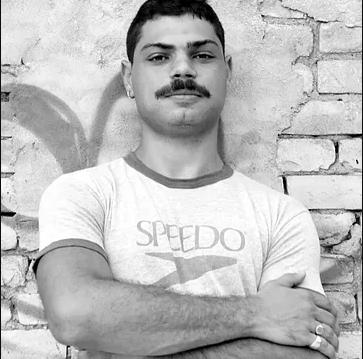
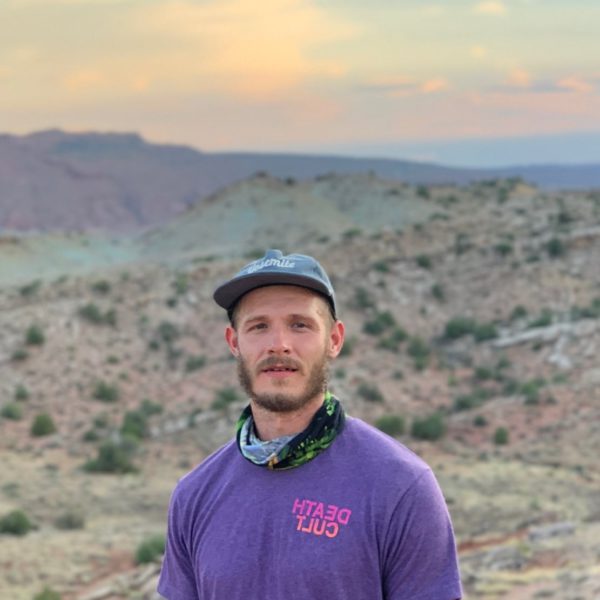
August Bernadicou is a 27-year-old gay historian and the President of the LGBTQ History Project Inc. Chris Coats is an editor and producer.
Together, they produce the QueerCore Podcast and will shortly be releasing an episode that is the definitive story on the rainbow flag featuring Lee Mentley, Lynn Segerblom, and Adrian Brooks.
August Bernadicou is presenting a Pride event in NYC this year that all folks are cordially invited to attend- its virtual;
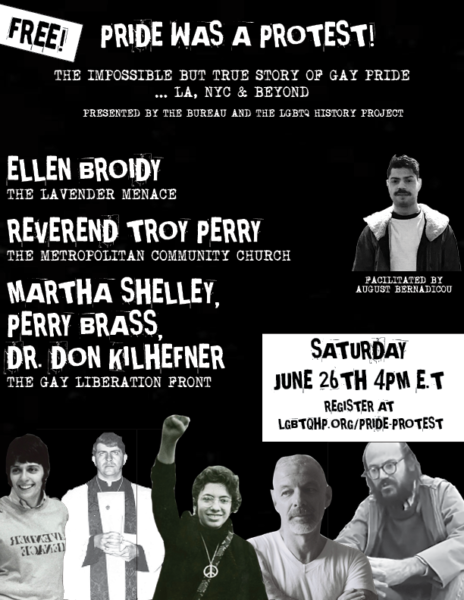
Here is the link for the event: https://www.lgbtqhp.org/pride-protest
History
Anti-LGBTQ activist Judith Reisman dies at age 86
There was the time she appeared on the Liberty Counsel’s radio show to declare that all gays are inherent pedophiles
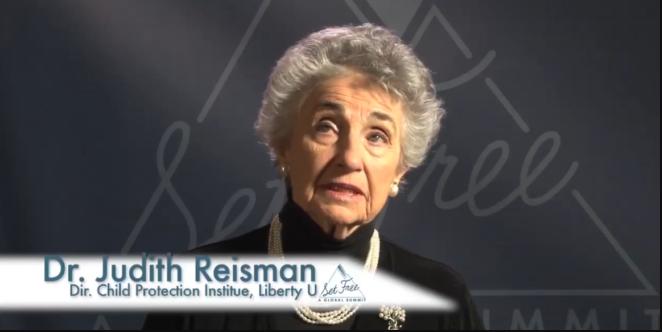
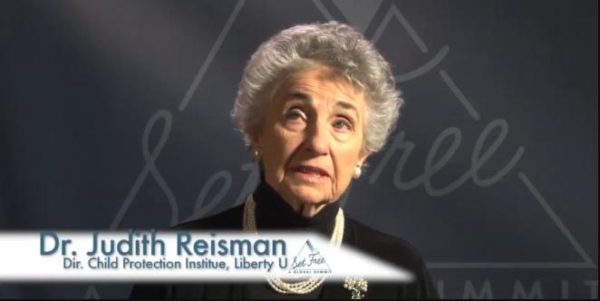
Editor’s note: Judith Ann Reisman was a vocal opponent of women’s reproductive rights, LGBTQ rights and known for her criticism and condemnation of the work in sexual studies of Dr. Alfred Kinsey. Reisman, a prominent conservative, has been referred to as the “founder of the modern anti-Kinsey movement.” New York-based LGBTQ journalist, activist and blogger Joe Jervis covered her for over a decade on his widely popular blogsite Joe.My.God.
By Joe Jervis | Longtime JMG readers will recall Reisman’s anti-LGBT claims as a regular feature here going back a decade or so. There was the time she appeared on the Liberty Counsel’s radio show to declare that all gays are inherent pedophiles:
We know that pedophilia, which was the original Greek they say it’s ‘love of’ but of course it isn’t, it’s ‘lust for’ boys. And there’s a strong, clear, cross-cultural, historical reality, people don’t want to do deal with, but the propaganda has been loud and strong to deny the fact, the aim of homosexual males and now increasingly females is not to have sex with other old guys and get married but to obtain sex with as many boys as possible. That’s the reality.
There was the time she called for a class action suit against groups that advocate for safer sex:
The reality is that condoms are manufactured and approved every day for natural, vaginal sex, not anal “sex.” They are not effectively designed to protect from disease those people who engage in sodomy. Such a lawsuit should target the AIDS Healthcare Foundation, Planned Parenthood and a myriad of teachers and school systems, too many to count, that have taught that anal “sex” (traditionally termed “sodomy” or “buggery” under British-based legal codes) as not so different than natural coitus. Due to the lies that have told, people who practiced sodomy are under the tragically mistaken notion that a condom is effective protection from disease.
There was the time she went to Jamaica to advocate for keeping homosexuality criminalized:
American Religious Right leaders Mat Staver and Judith Reisman are scheduled to be featured speakers at a conference in Jamaica this weekend hosted by a group that has been working to preserve the country’s criminal ban on consensual gay sex. The annual conference, hosted by the Jamaica Coalition for a Healthy Society, will focus on how “[c]ontemporary society has become increasingly hostile to the traditional definitions of marriage and family” and Staver.
There was the time she blamed the demise of “Don’t Ask, Don’t Tell” on a rise in reported sexual assaults in the military:
Why is the best-kept military secret that most soldierly sexual assaults are now definitively homo, not heterosexual, male-on-male sexual exploitation? While men are statistically more loathe to report their sexual victimization than are women, 10,700 male soldiers, sailors and airmen in 2010 actually reported their sexual assaults. What this means is not totally clear, since men are cannot technically be raped, despite the term being regularly used in the recent hearings on the matter.
There was the time she compared activists against school bullying to Hitler Youth:
Both the GLSEN youth and the Hitler Youth were trained to be revolutionary leaders of the brave new world order. GLSEN school clubs and their teacher sponsor/trainers are now funded by major corporations and by some state funds. GLESN’s Day of Silence and “GAY ALLY!” pledge cards for kindergartners and other children (left) are direct assaults on traditional parental, American values. German children’s literature historians document Hitler’s pioneering ban of both the Ten Commandments and biblical stories from Nazi school texts in favor of coarse and violent tales that ridiculed religious believers and their values.
There was the time she was condemned by the Anti-Defamation League:
Holocaust analogies generate headlines and get attention, they do little in the service of truth, history or memory. When [Peter] LaBarbera and Reisman suggest that gay, lesbian, bisexual and transgender people are “demonizing [Christians] like the Nazis used to do to the Jews,” they undermine the historical truth of the Holocaust as a singular event in human history that led to the murder of six million Jews and millions of others. Holocaust comparisons are deeply offensive and trivialize and distort the history and meaning of the Holocaust.
And let’s close with this notation from Rational Wiki:
Reisman is a supporter of Scott Lively and his completely insane screed, The Pink Swastika. She has claimed that she believes that a homosexual movement in Germany gave rise to the Nazi Party and the Holocaust. She enthusiastically and unconditionally endorses criminalization of homosexuality, despite the fact that homosexuals were were one of the Nazis’ target groups for annihilation. Reisman has claimed that the homosexuals employ recruitment techniques that rival those of the United States Marine Corps to transform innocent children into raving homosexuals.
Reisman, passed away on Friday, April 9, 2021, two days before her 86th birthday. From the magazine of the far-right John Birch Society:
Like Judith the Biblical heroine, Dr. Reisman was fearless and stood against the great powers of the world in our time. When her countrymen were ready to surrender to the mighty Assyrian army, the Biblical Judith, trusting in God, walked into the enemy camp — and walked out with the head of Holofernes, the Assyrian general, thus saving her people. Likewise, Judith Reisman repeatedly, over the past several decades, strode into many hostile enemy camps around the world — colleges, universities, legislative bodies, media outlets — to speak truth to power and to expose vile works of darkness.
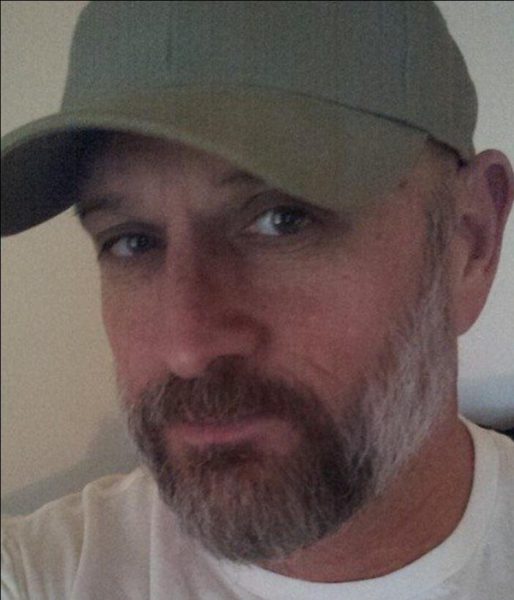
Joseph “Joe” Jervis is an American blogger and writer based out of New York City. He is the author of Joe.My.God., a personal blog which, since he first posted on April 27, 2004, has primarily covered LGBT news and opinion.
The preceding article was originally published at Joe.My.God and republished by permission.
-
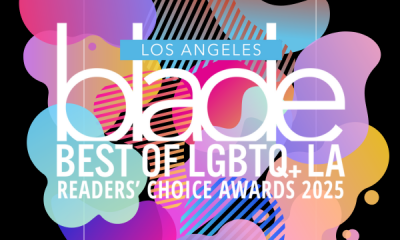
 Arts & Entertainment5 hours ago
Arts & Entertainment5 hours ago2025 Best of LGBTQ LA Readers’ Choice Award Nominations
-
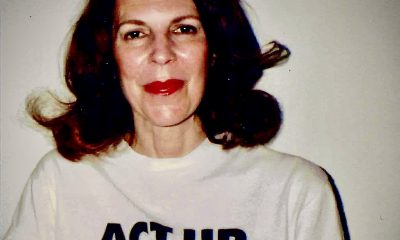
 Obituary3 days ago
Obituary3 days agoNanette Kazaoka, an unlikely AIDS activist, dies at 83
-
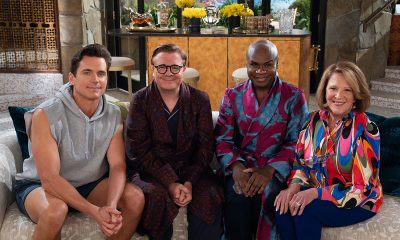
 Television4 days ago
Television4 days agoNo, ‘Mid-Century Modern’ is not a ‘Golden Girls’ remake
-
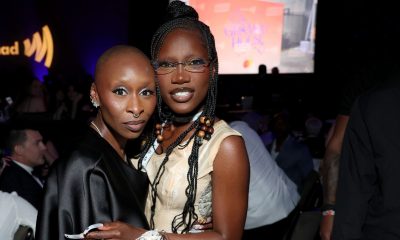
 Local8 hours ago
Local8 hours ago‘Think of those who have not been seen,’ Cynthia Erivo’s powerful message at GLAAD Awards
-

 Features6 hours ago
Features6 hours agoTristan Schukraft: Keeping Our Queer Spaces Thriving
-

 Opinions5 hours ago
Opinions5 hours agoGay bar in California bans MAGA gear — but no other political expression — from its premises
